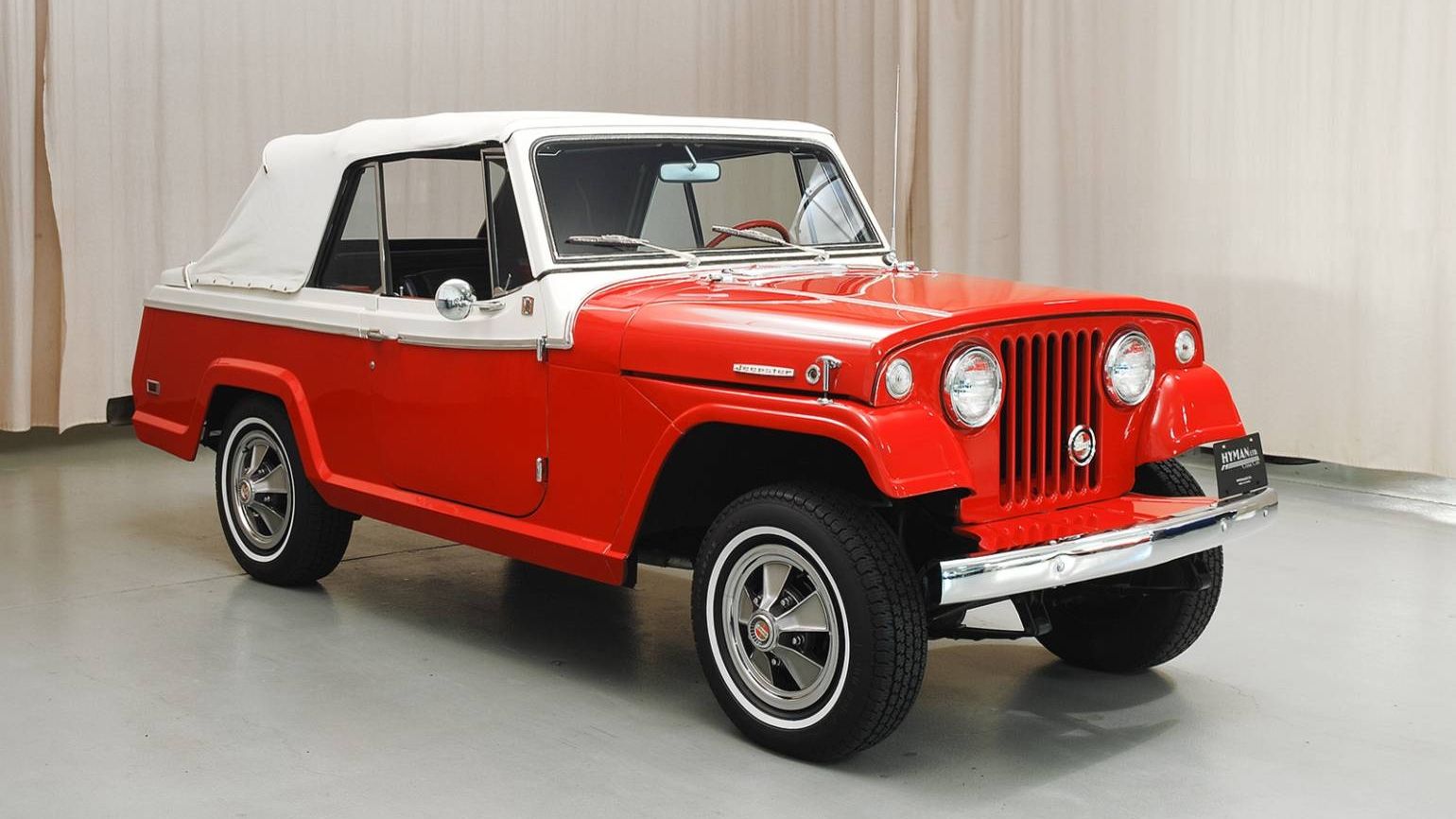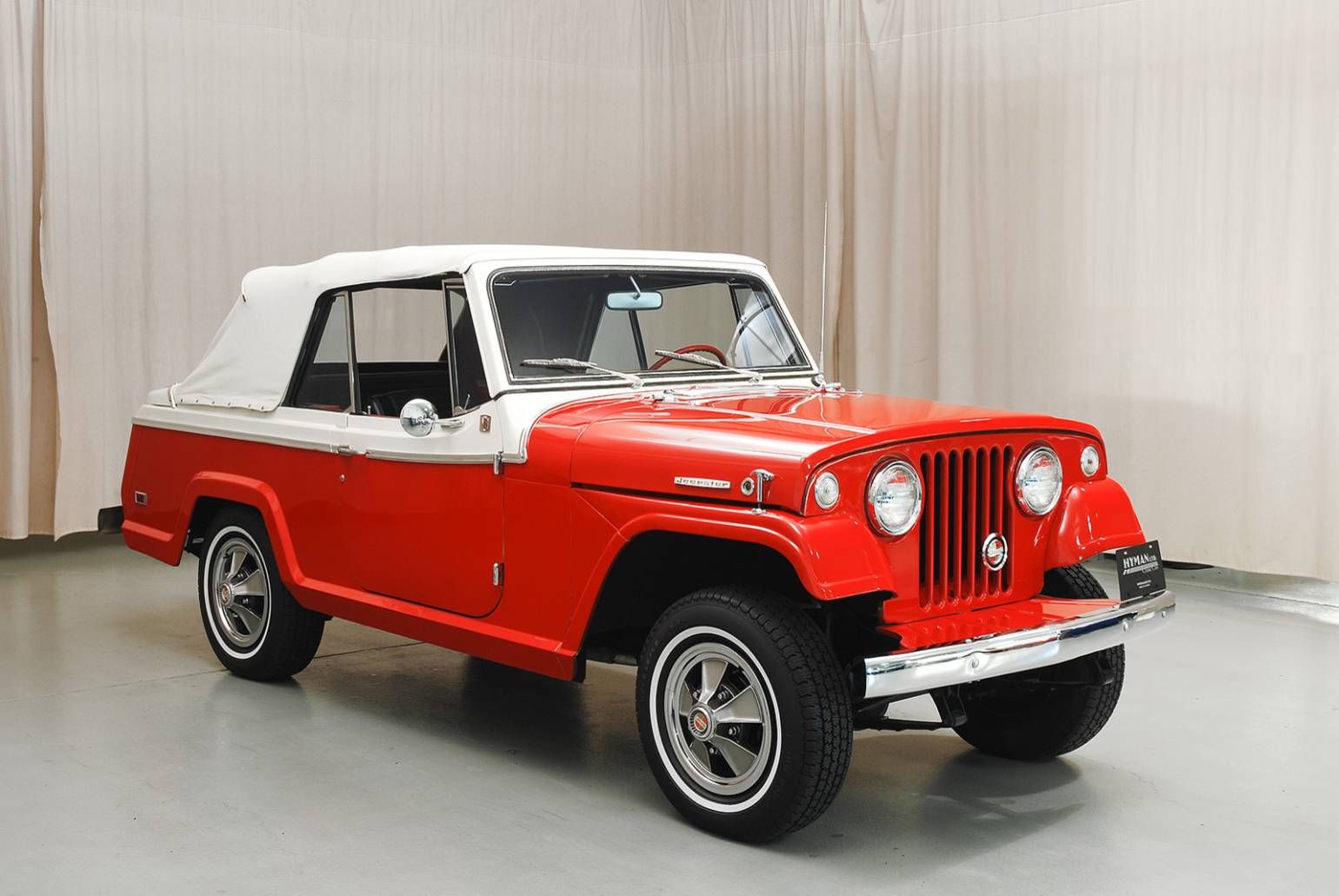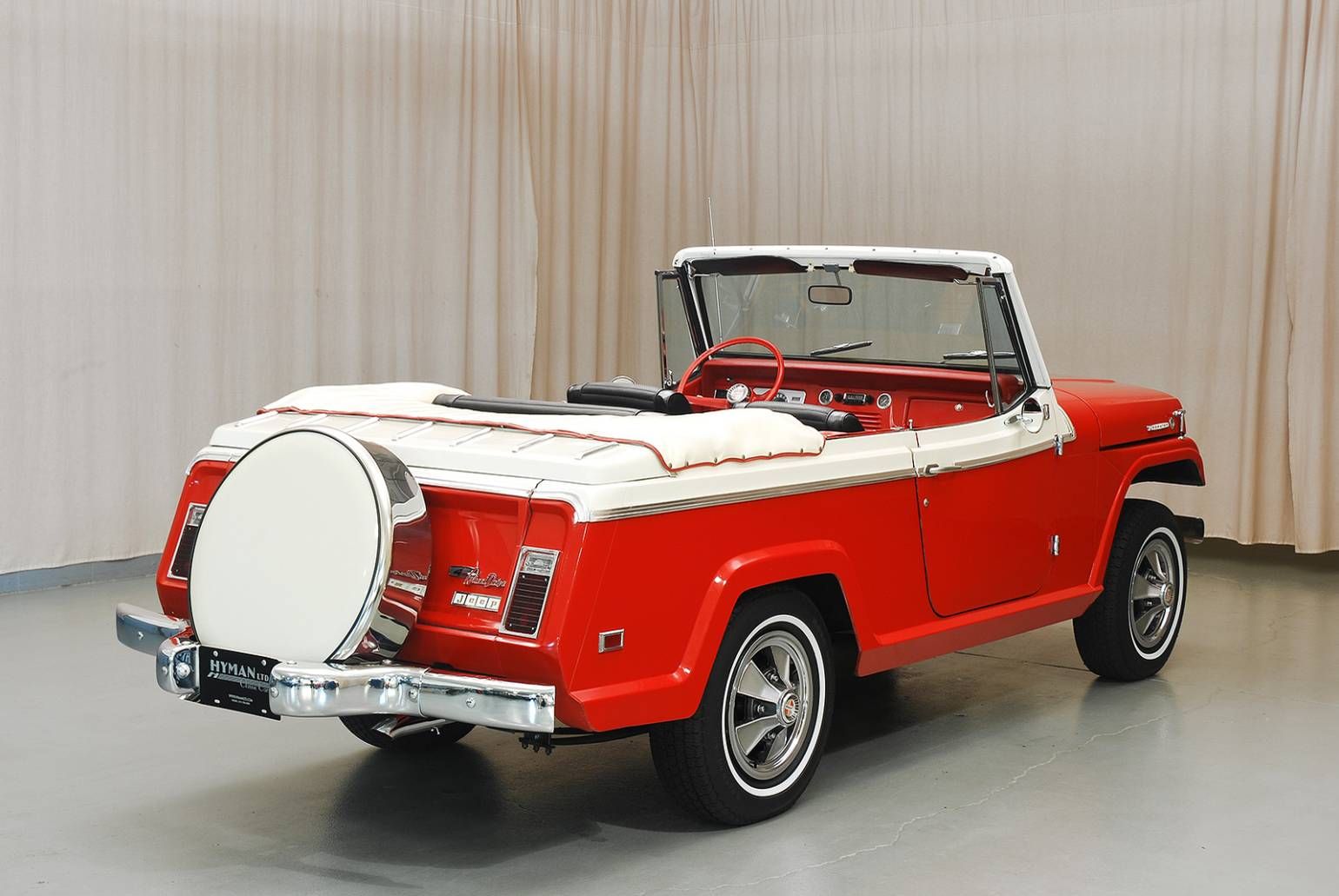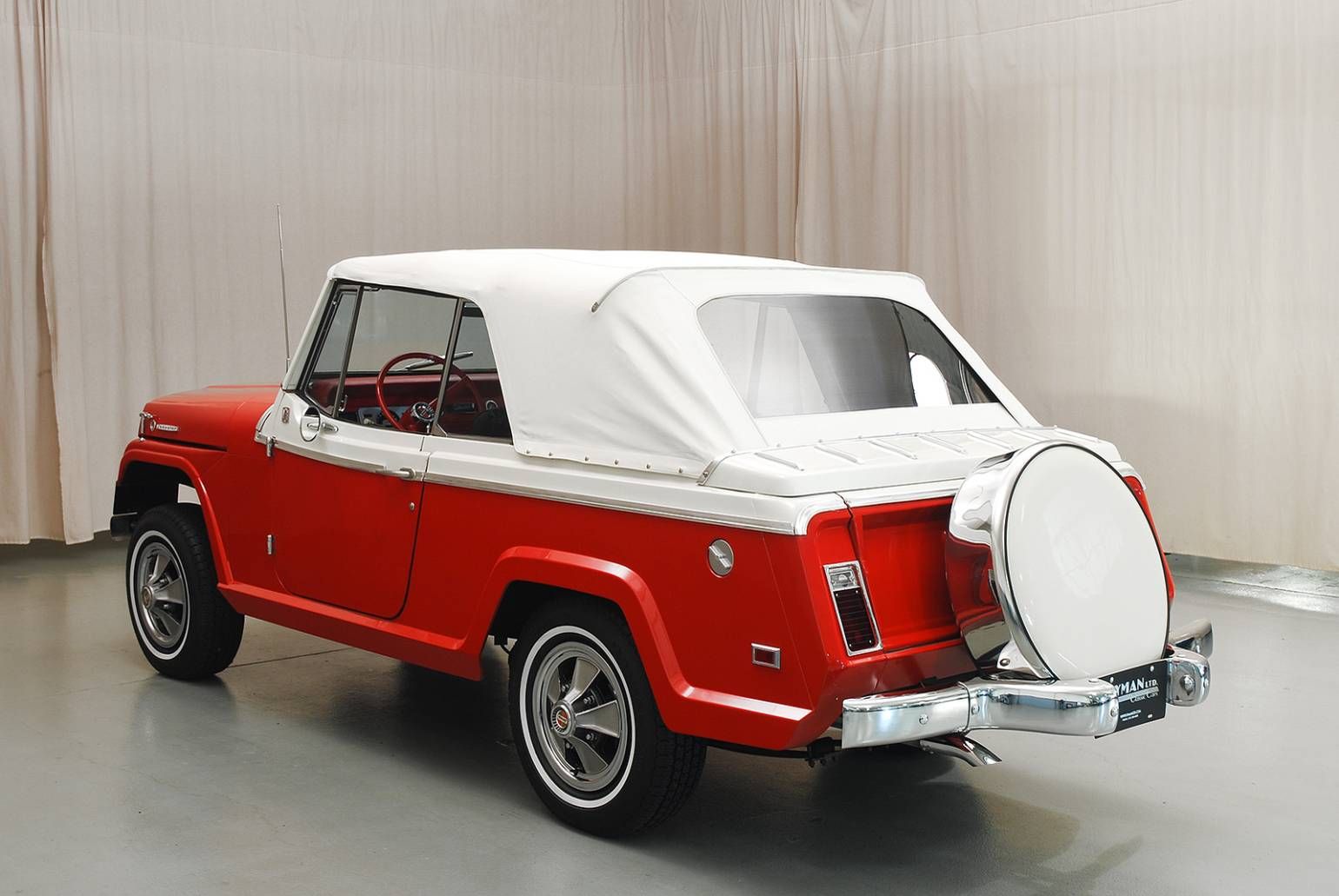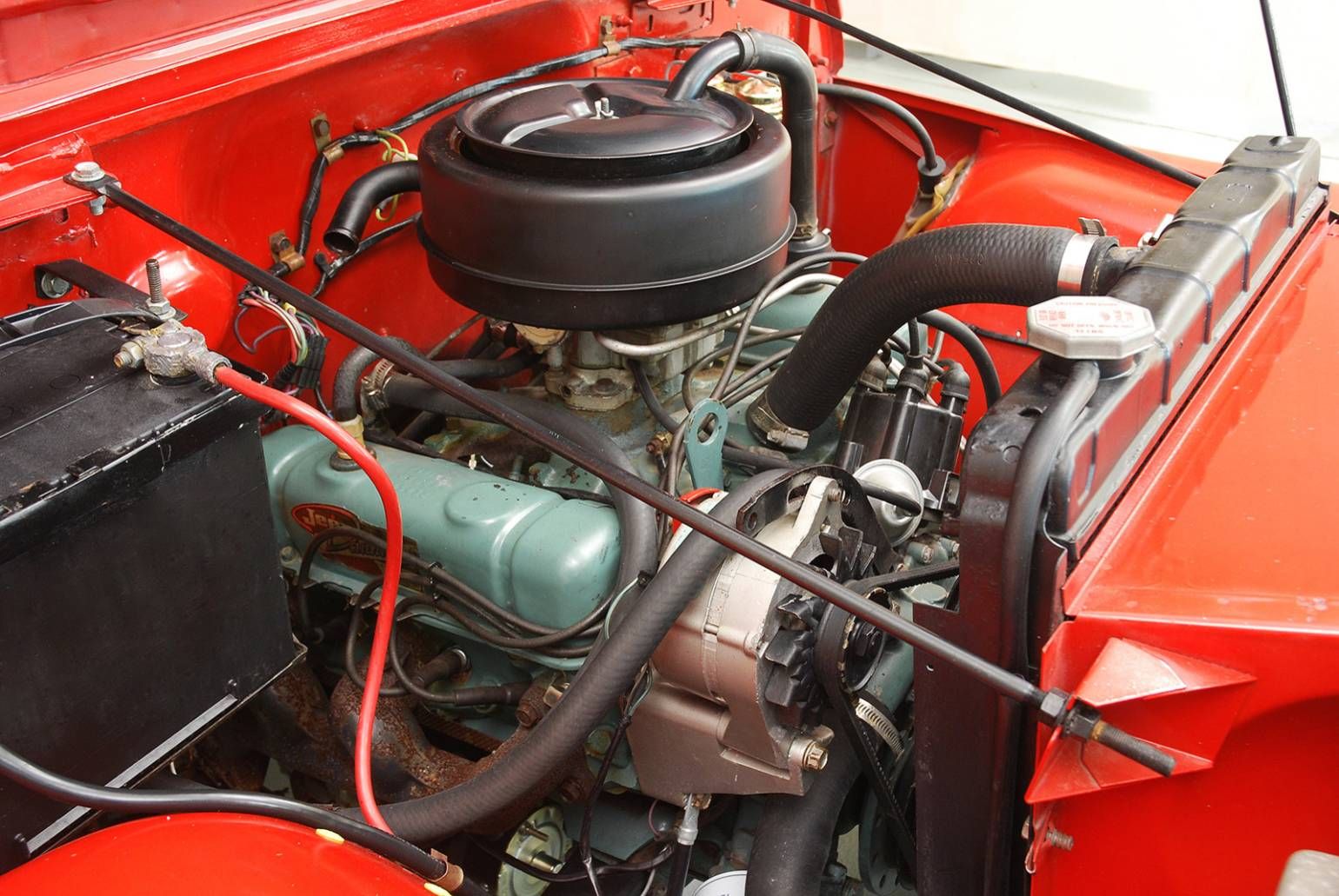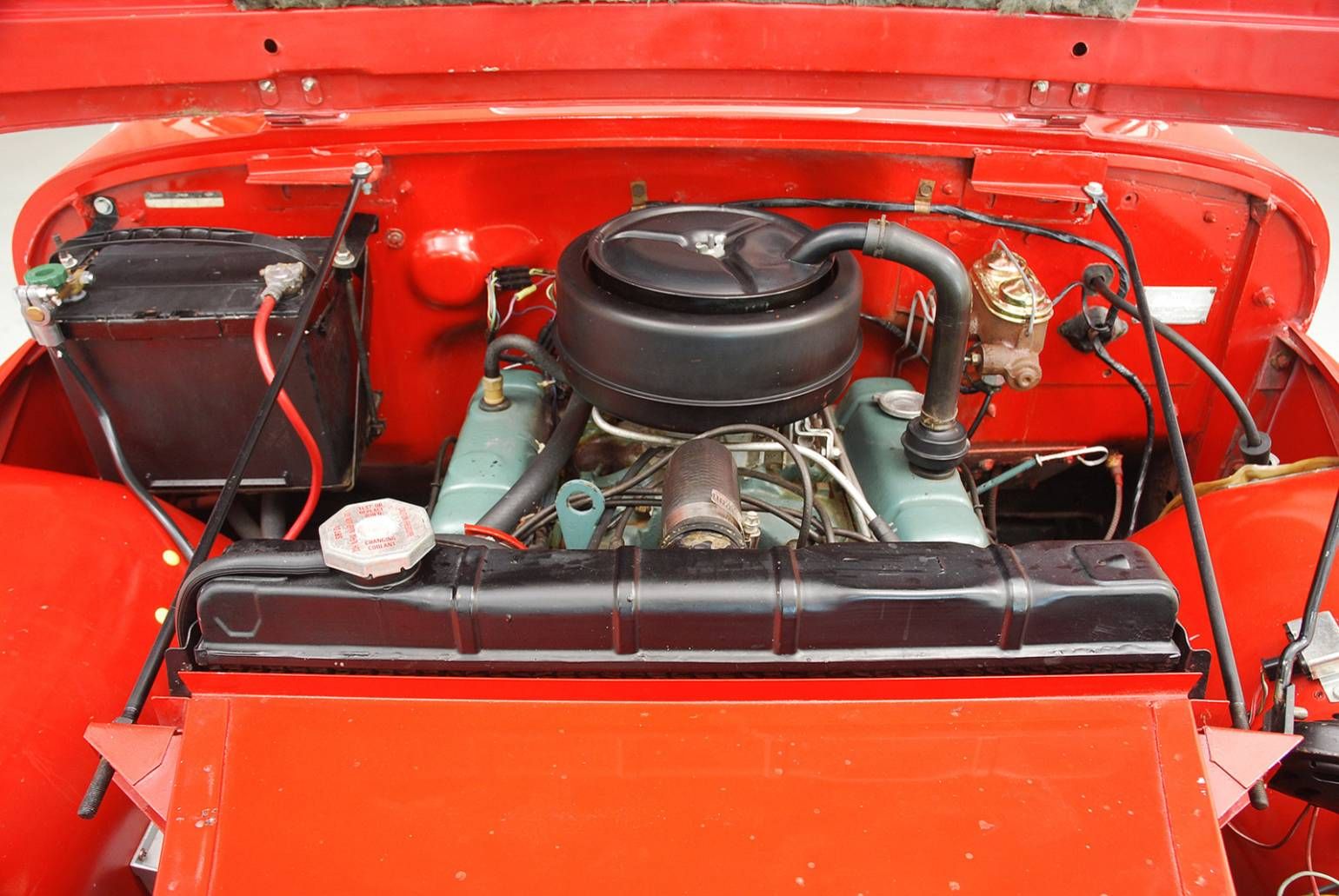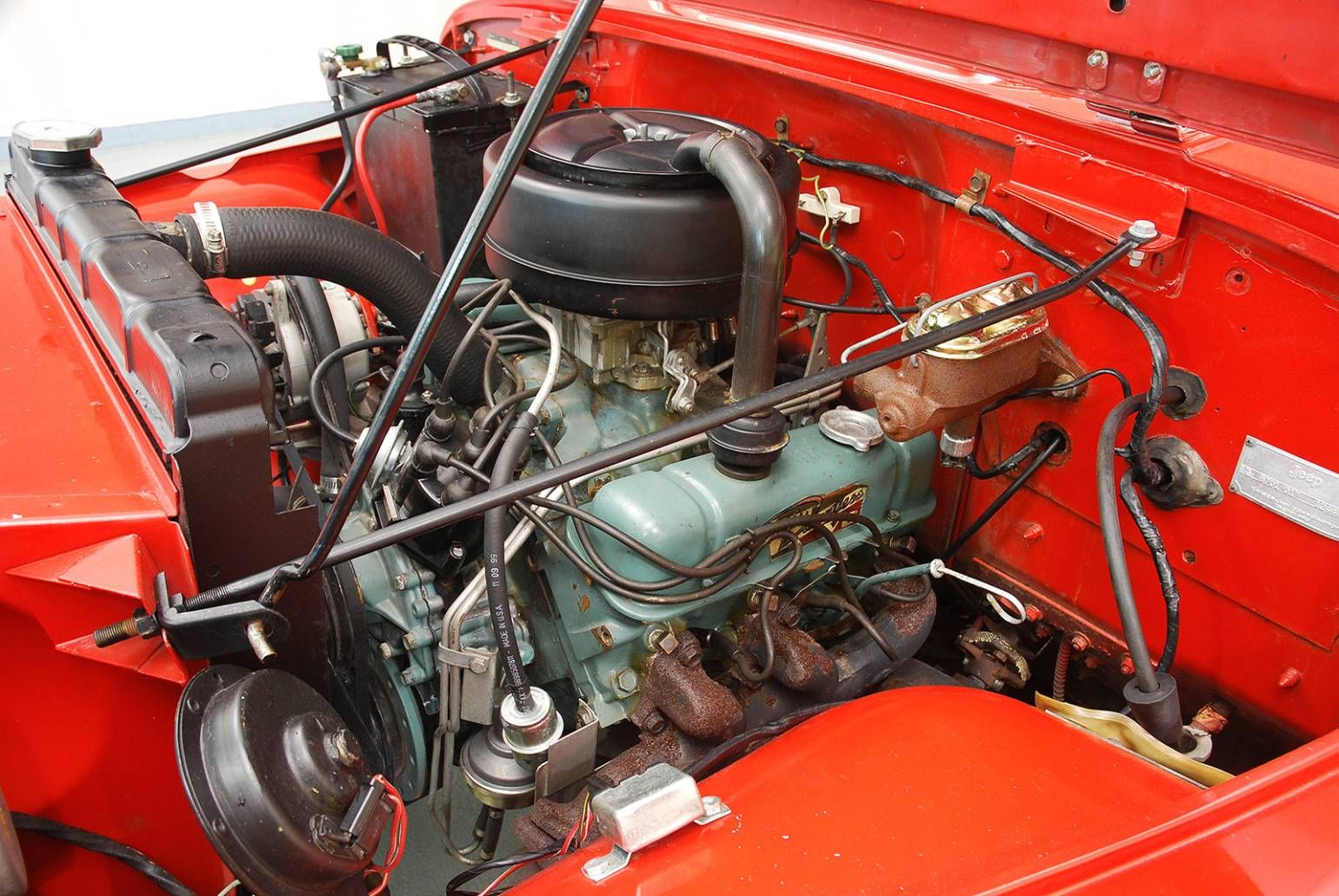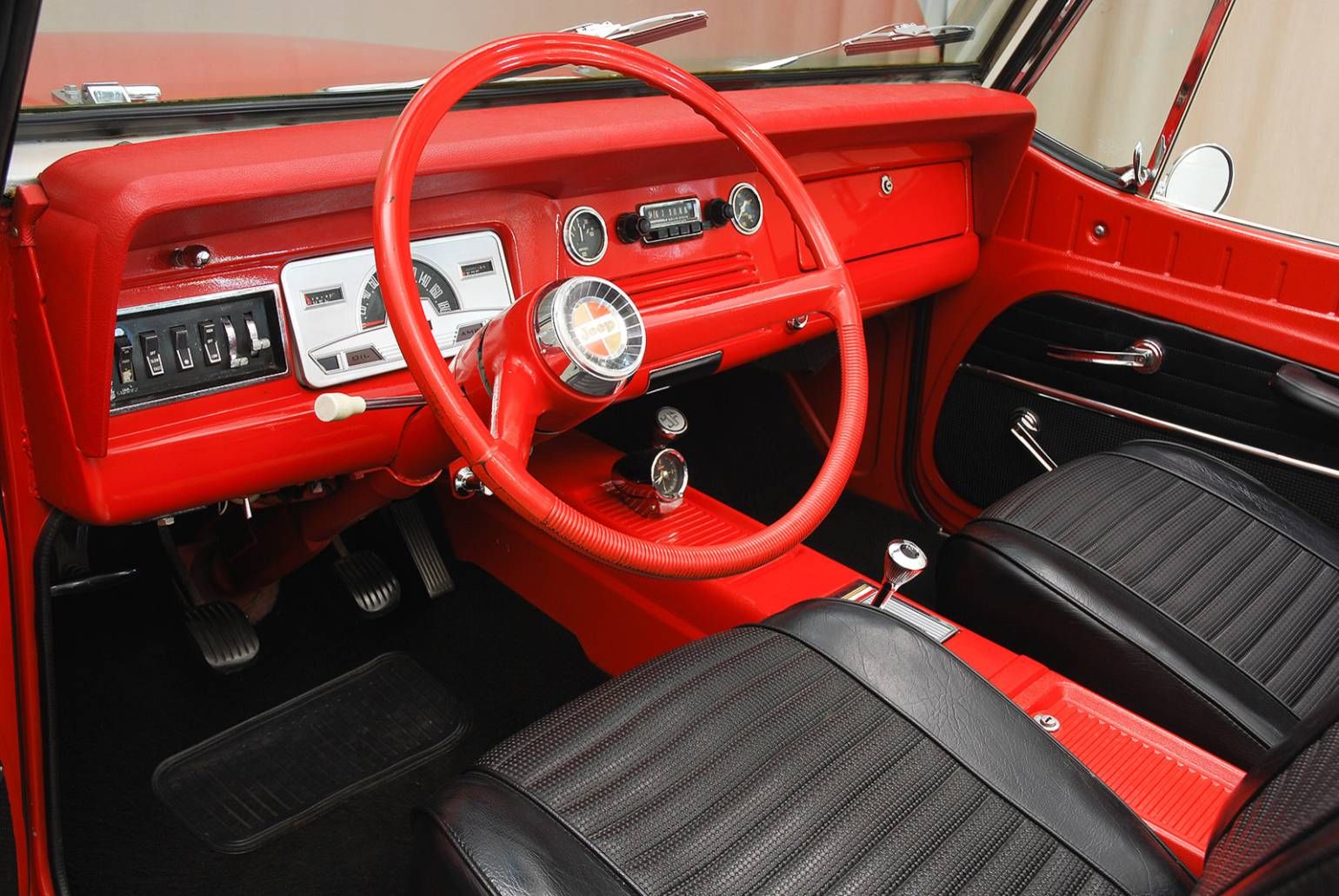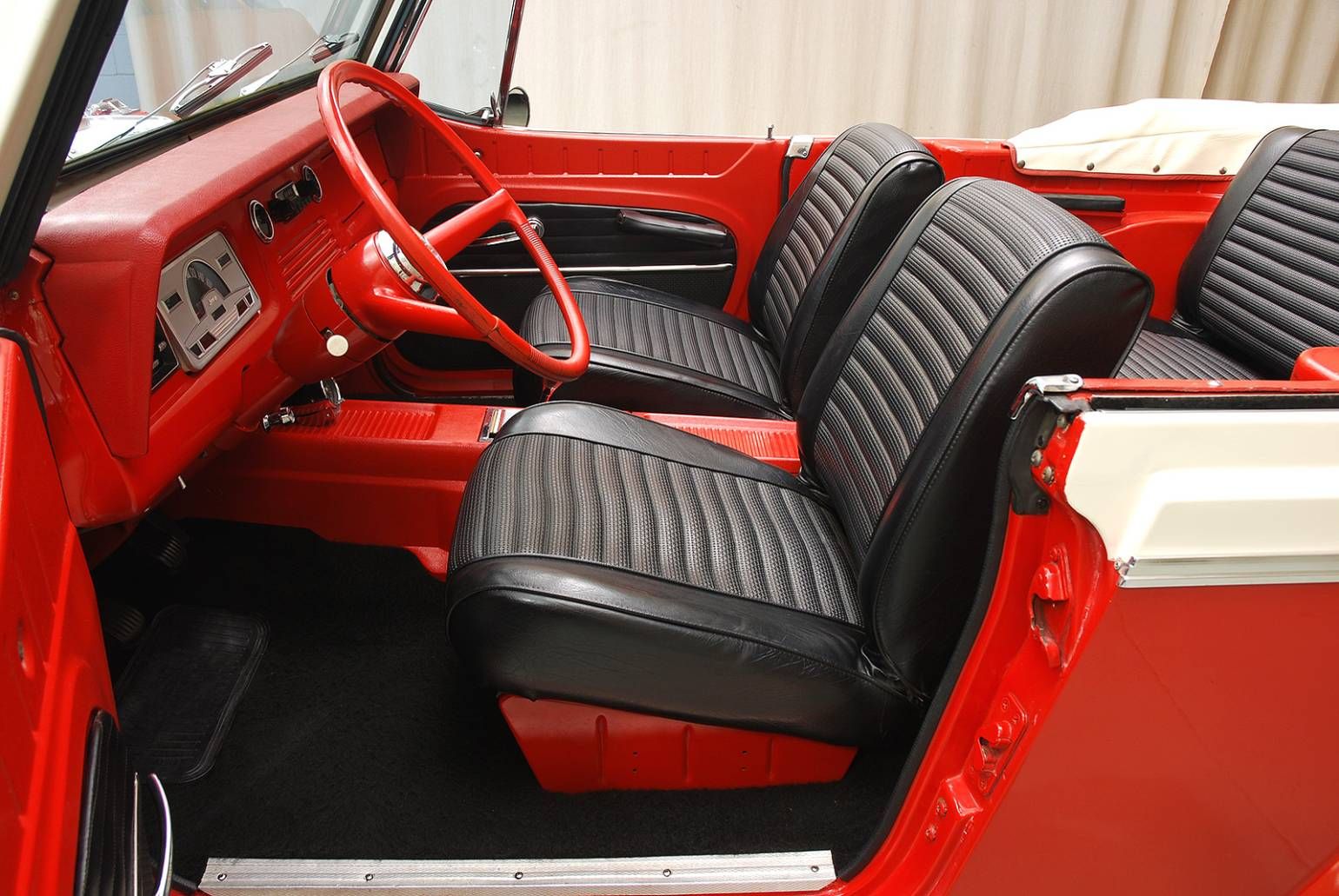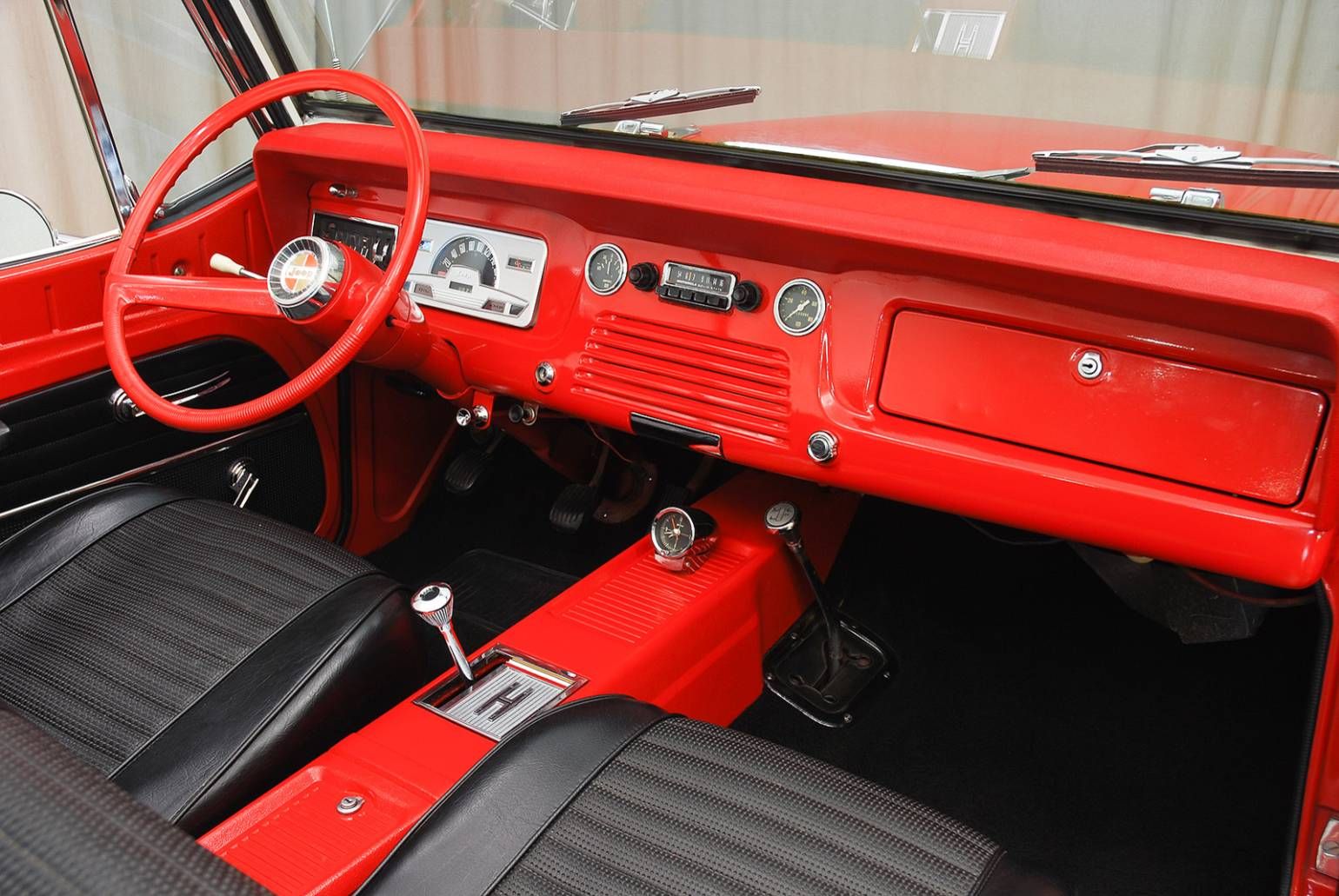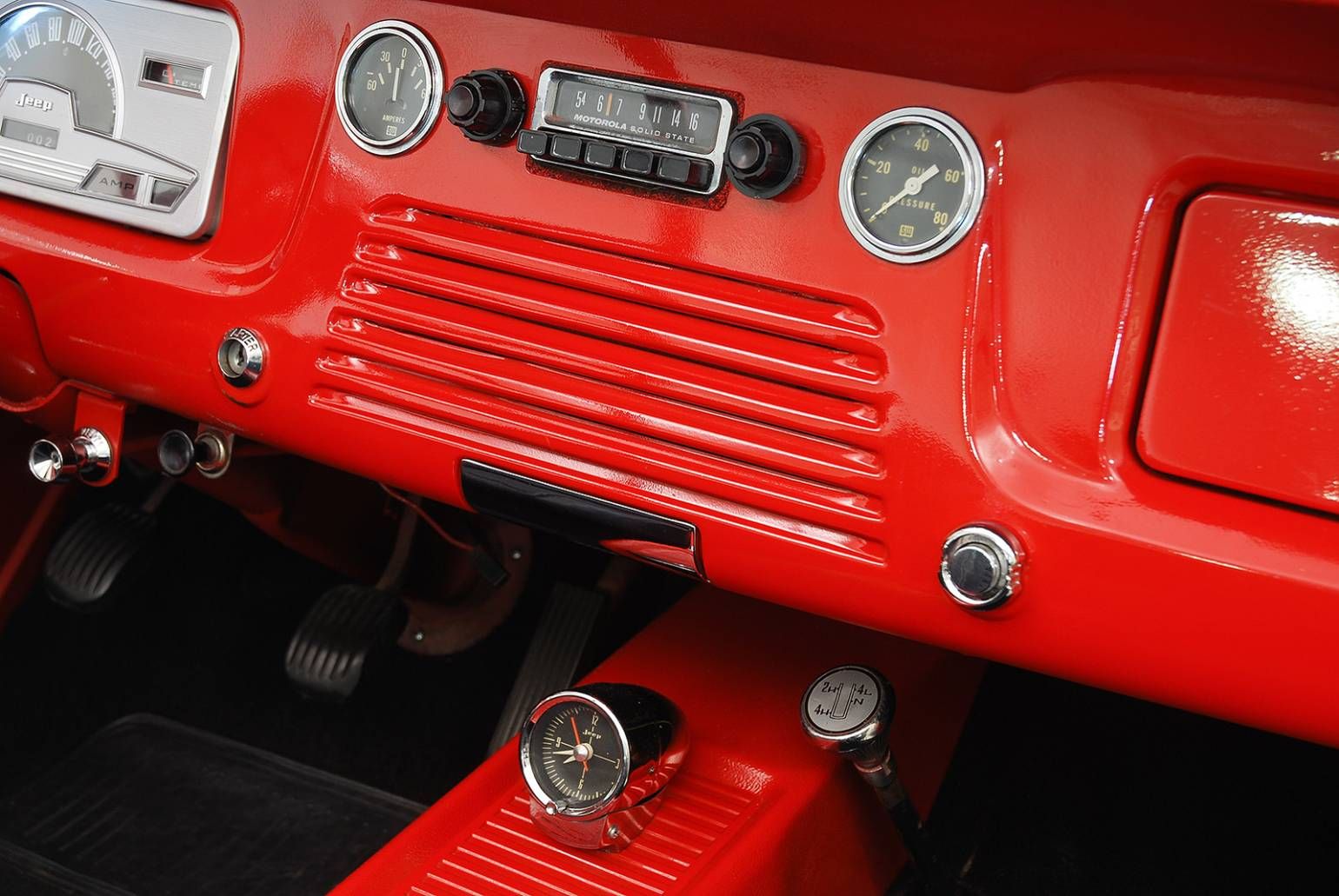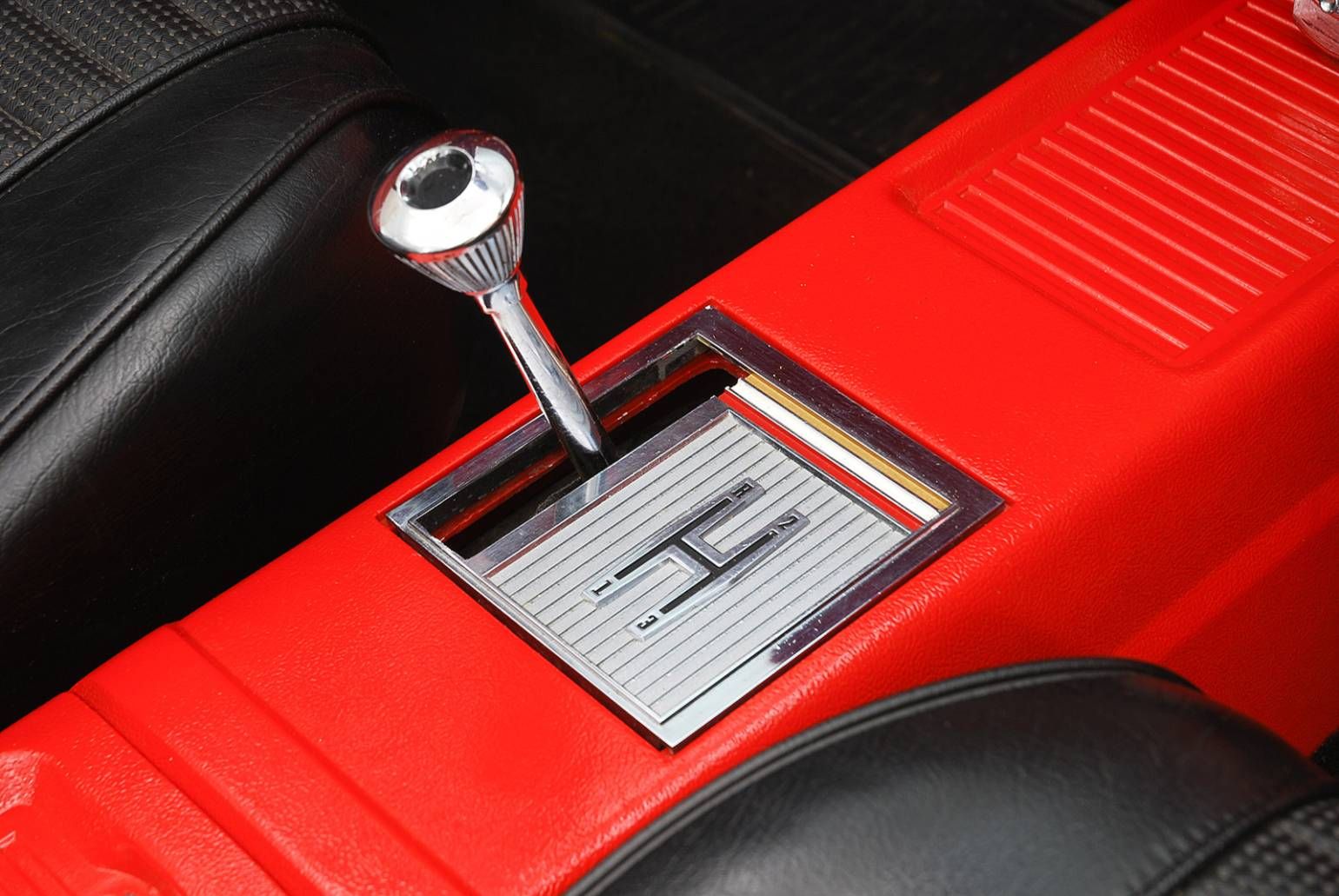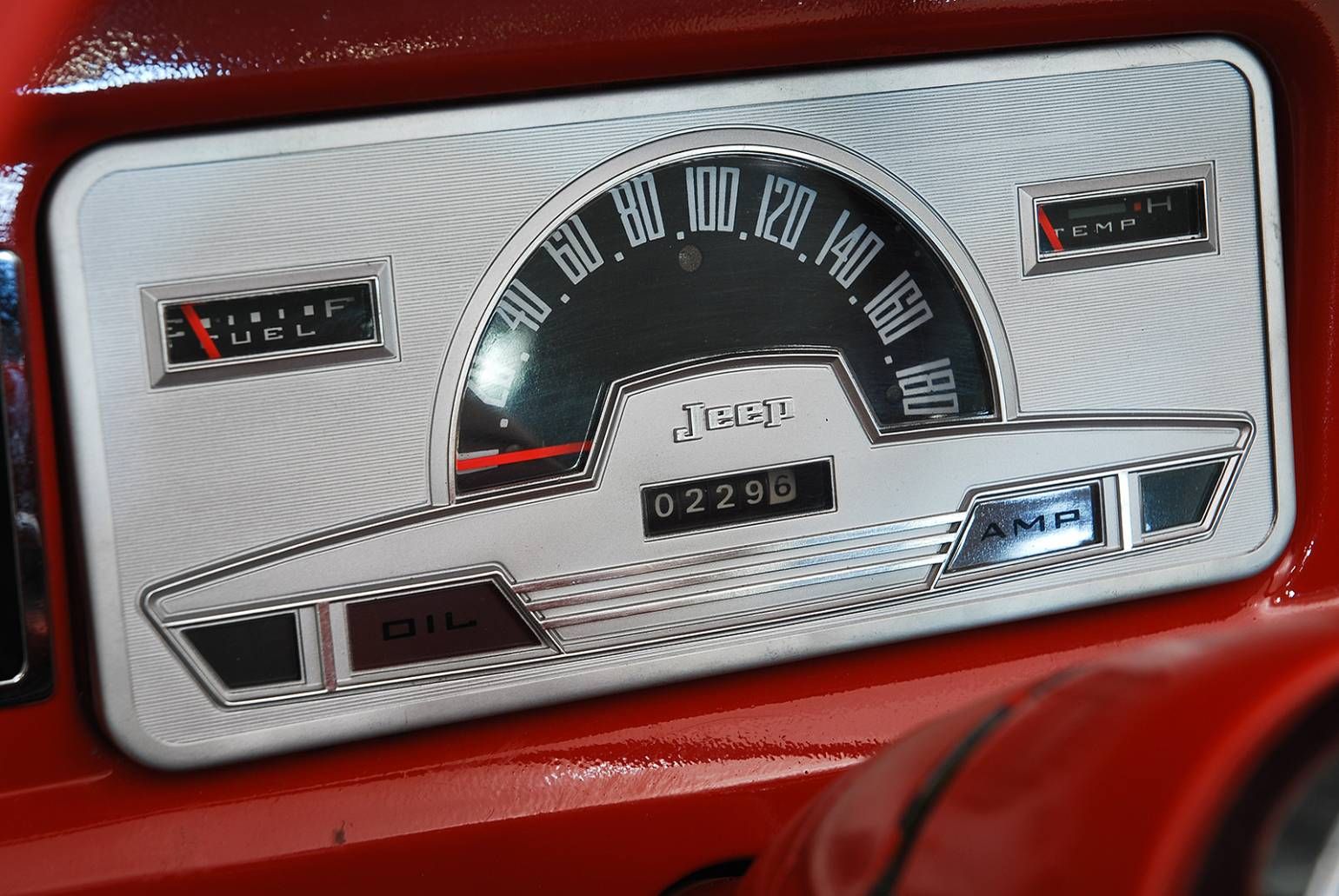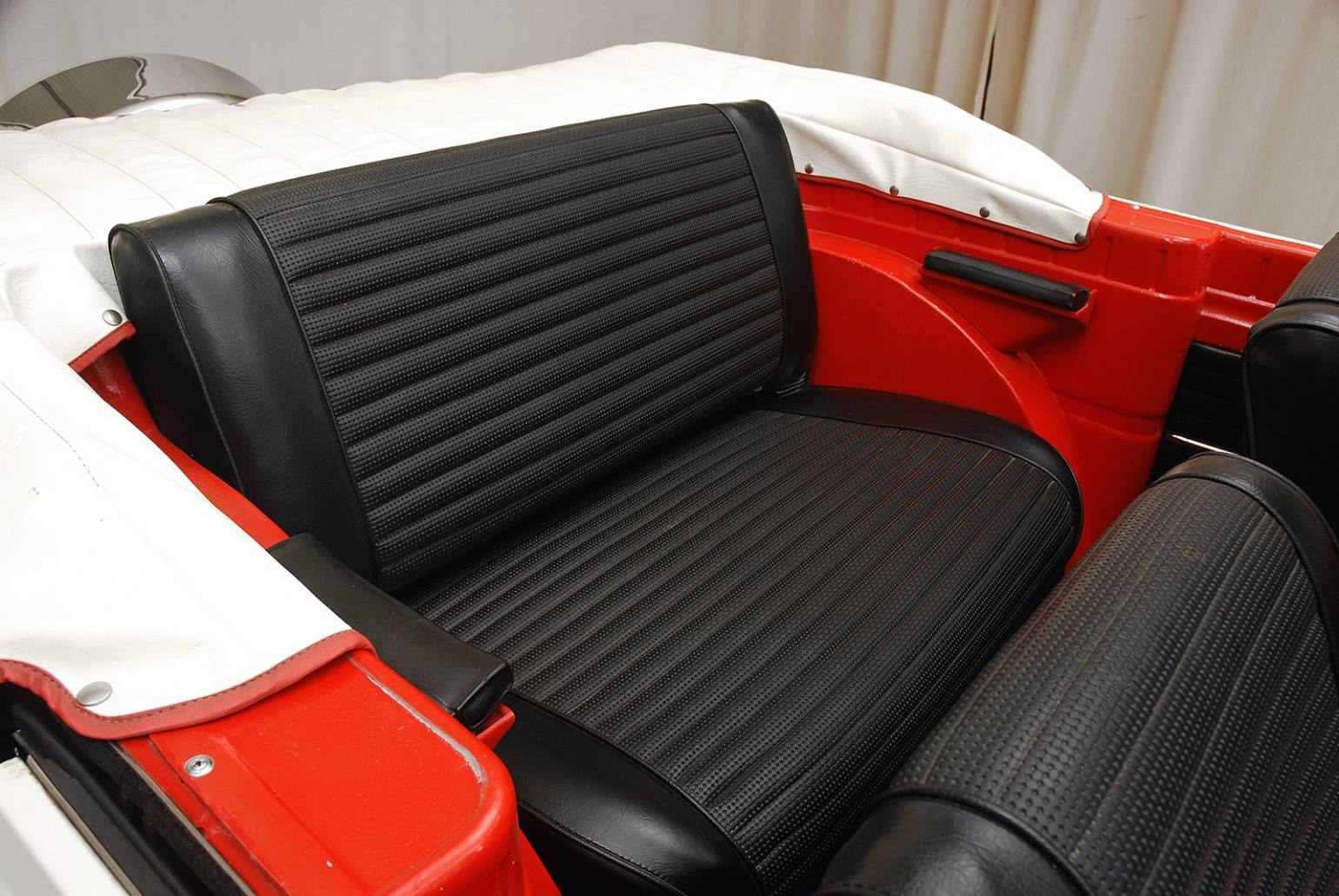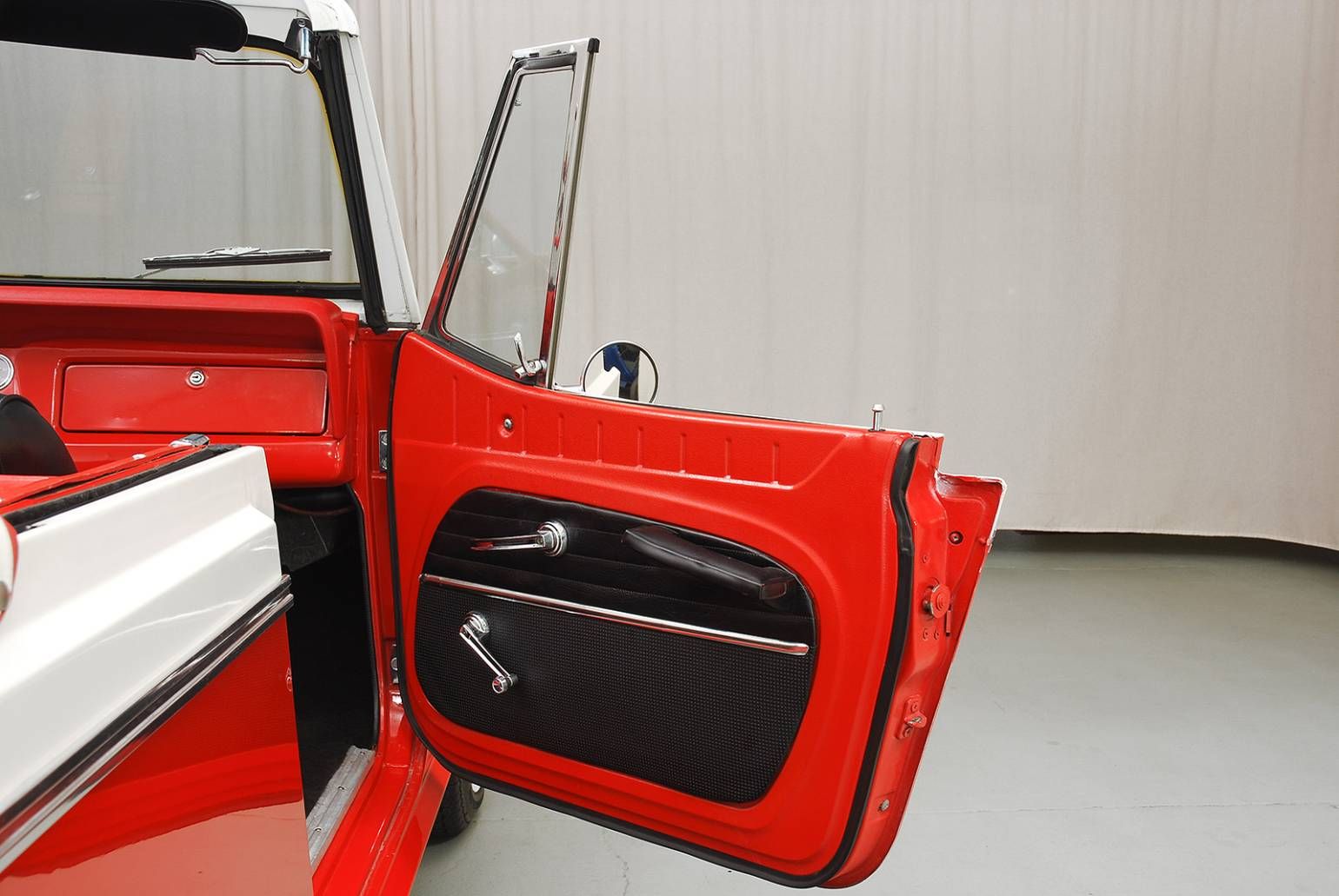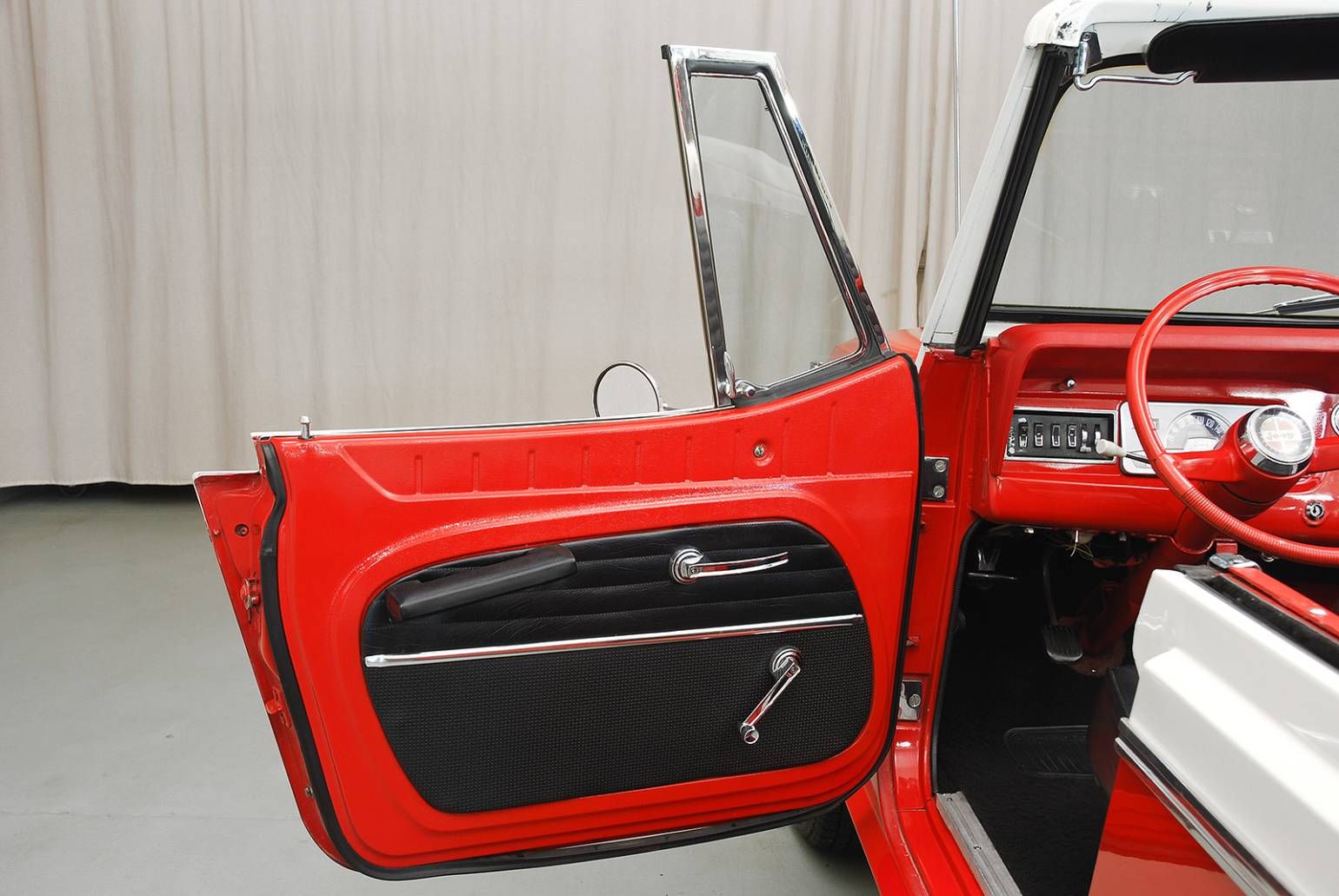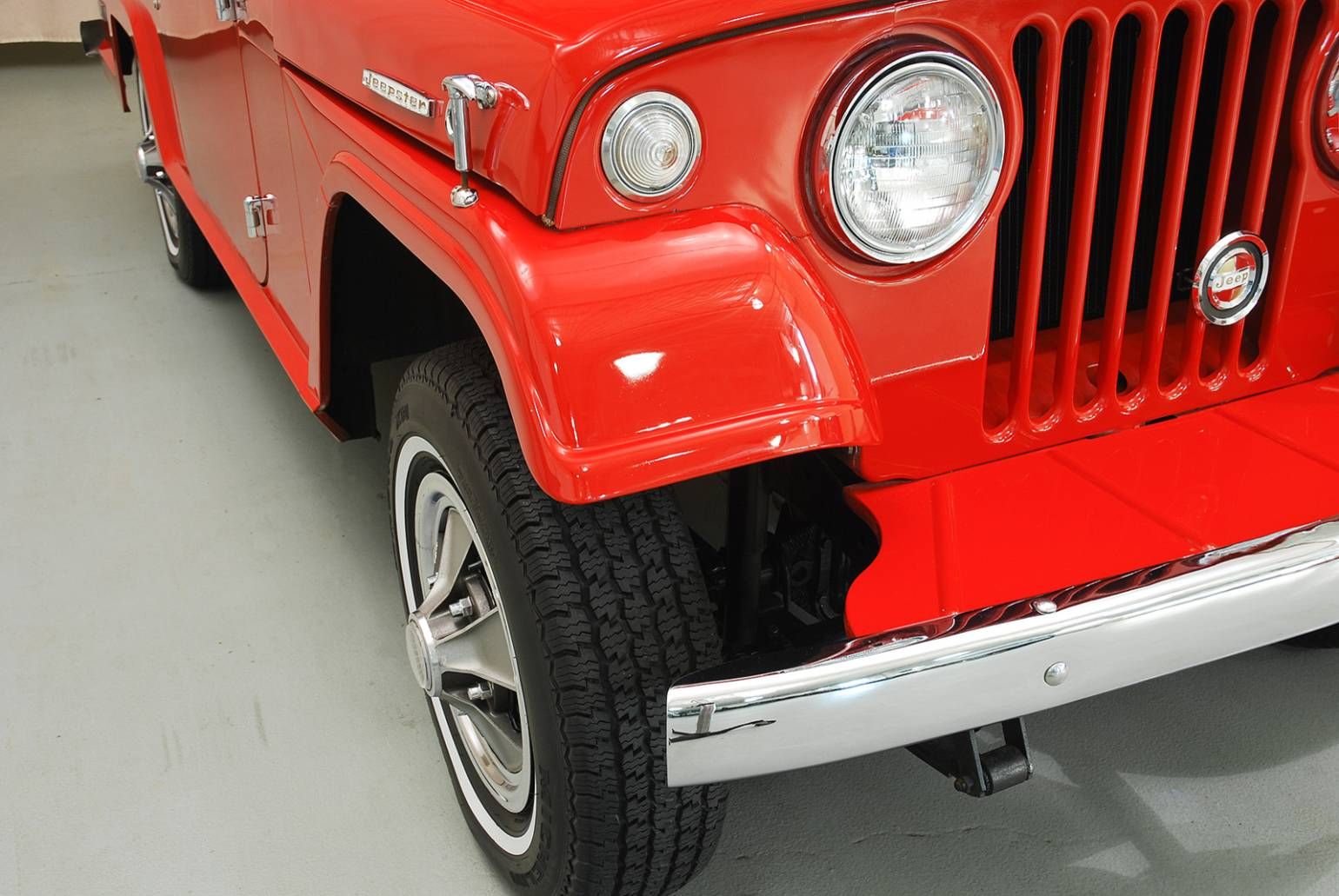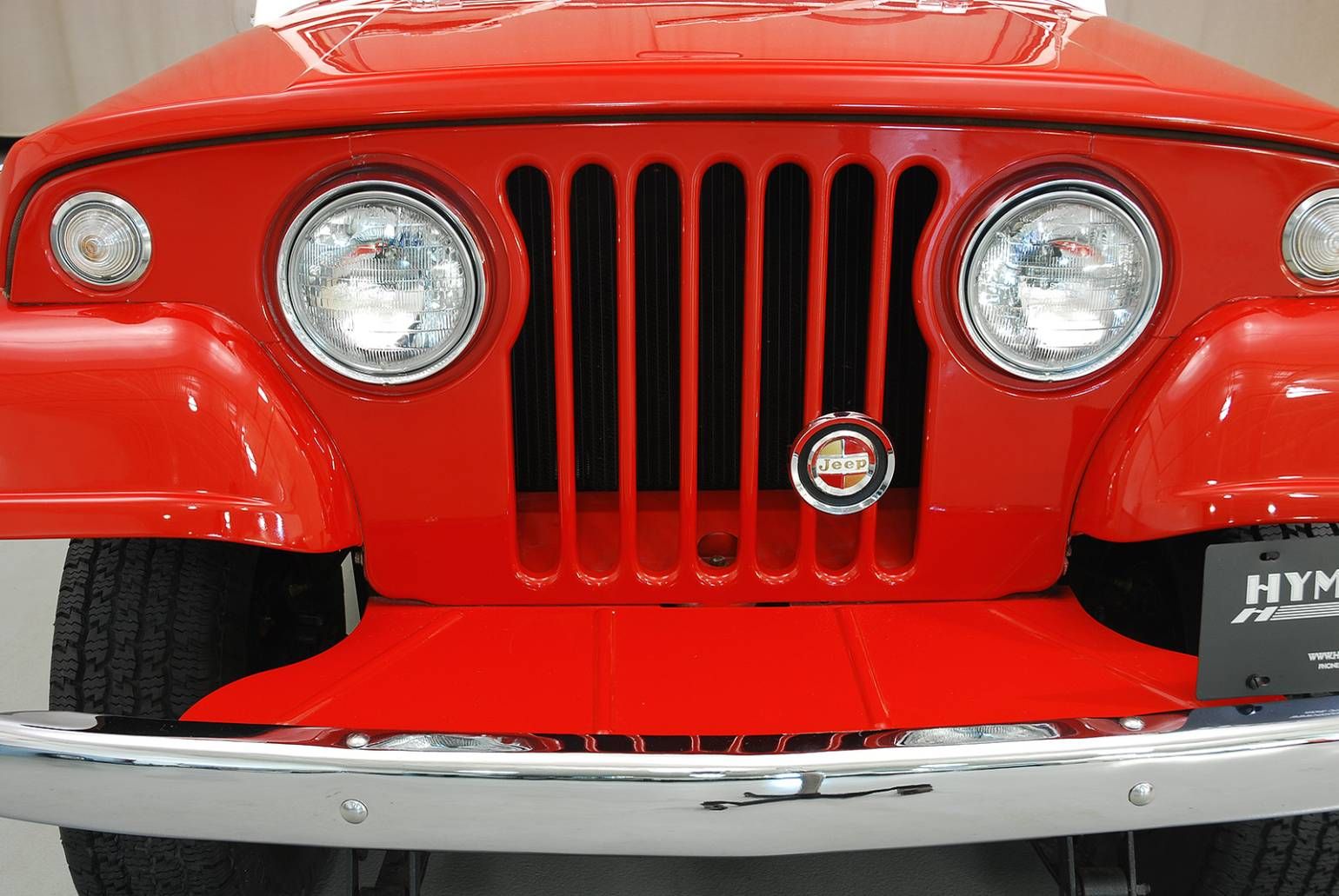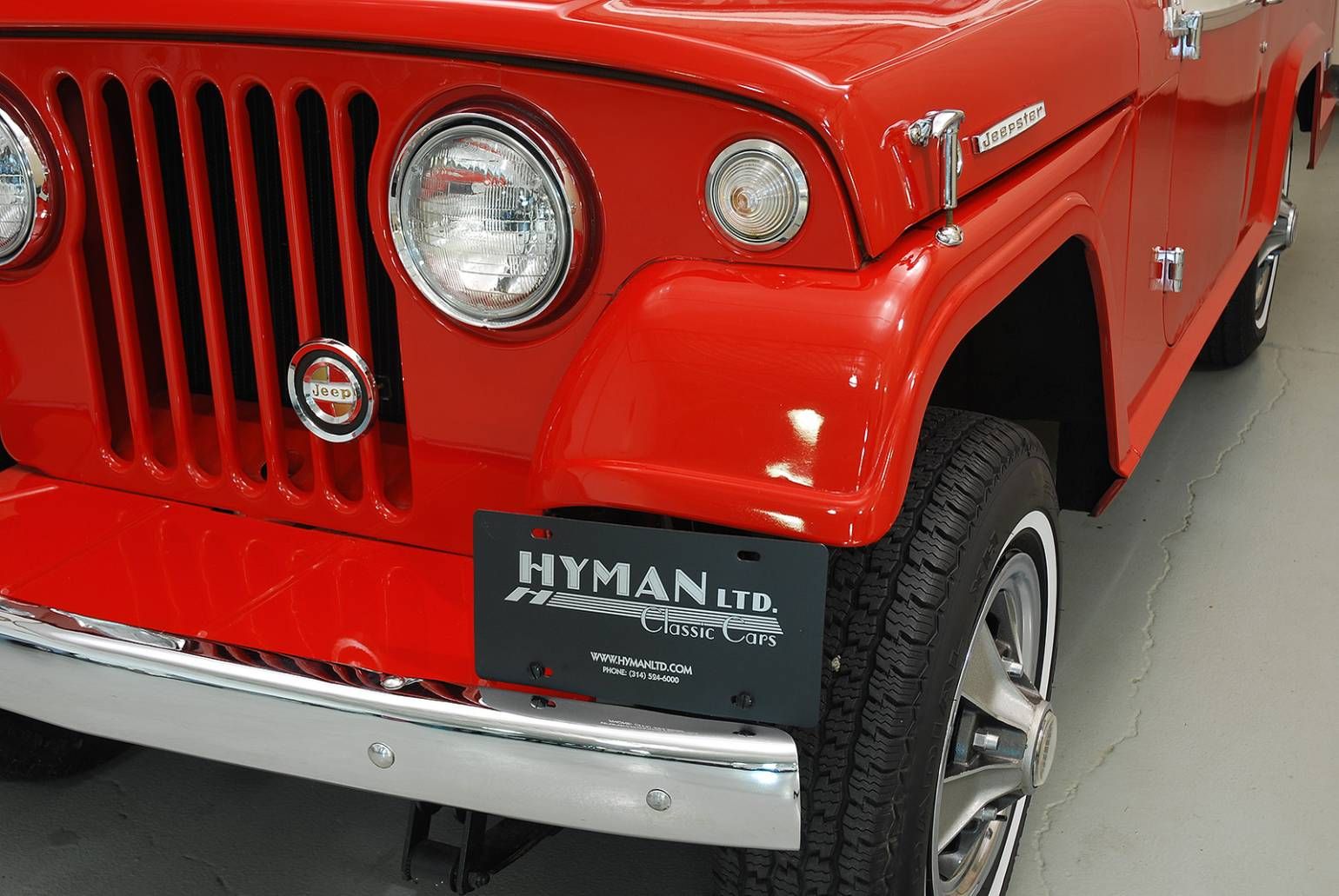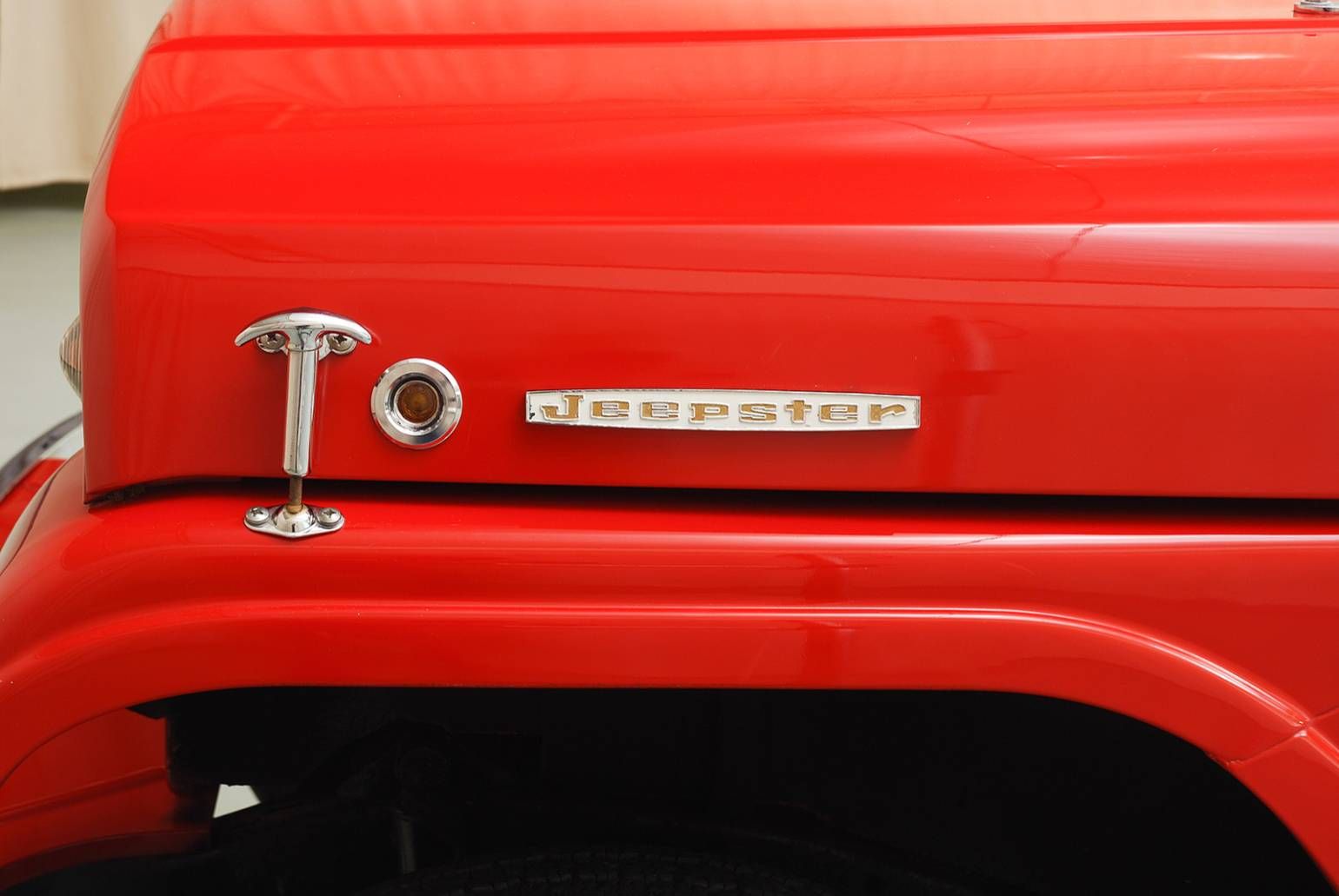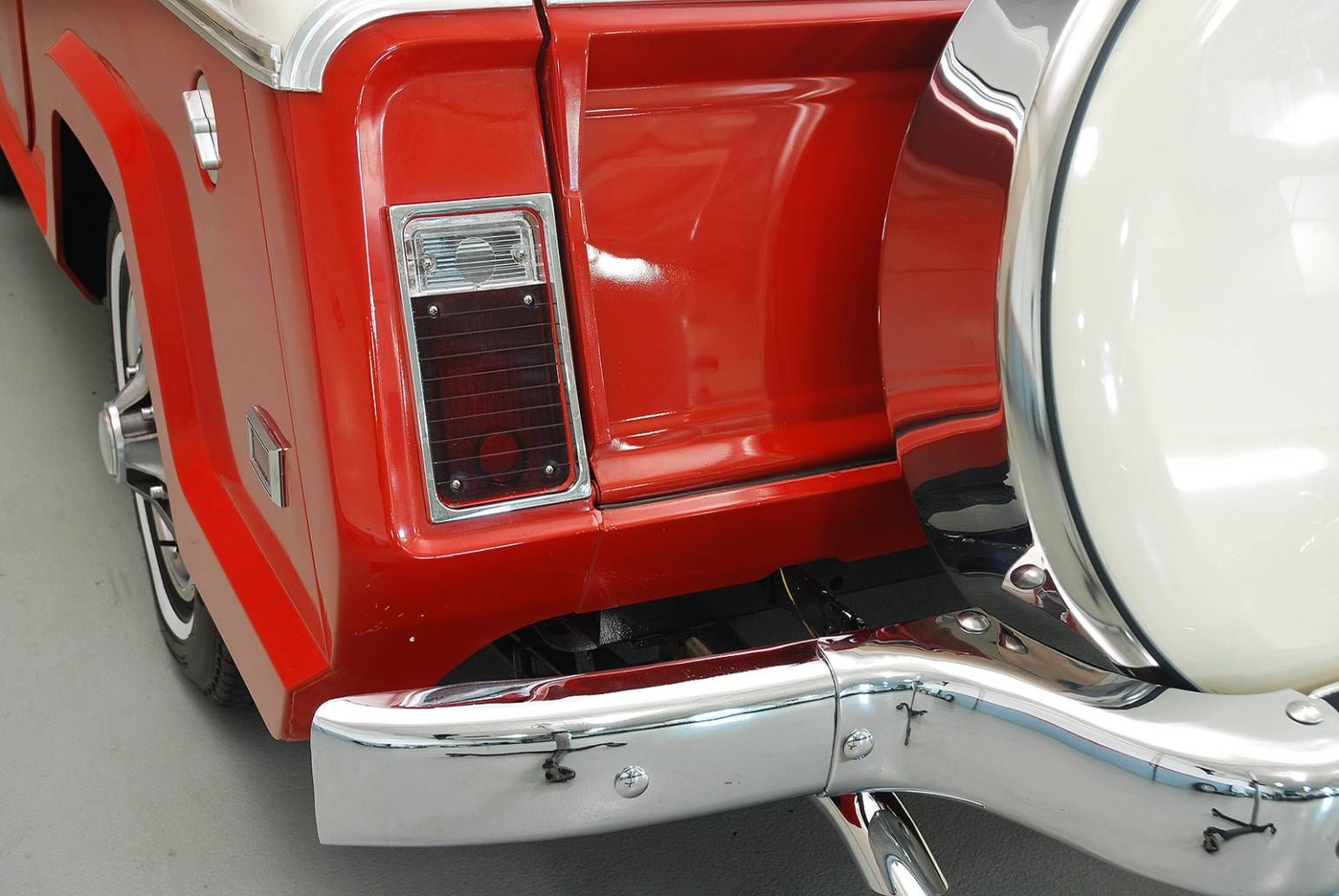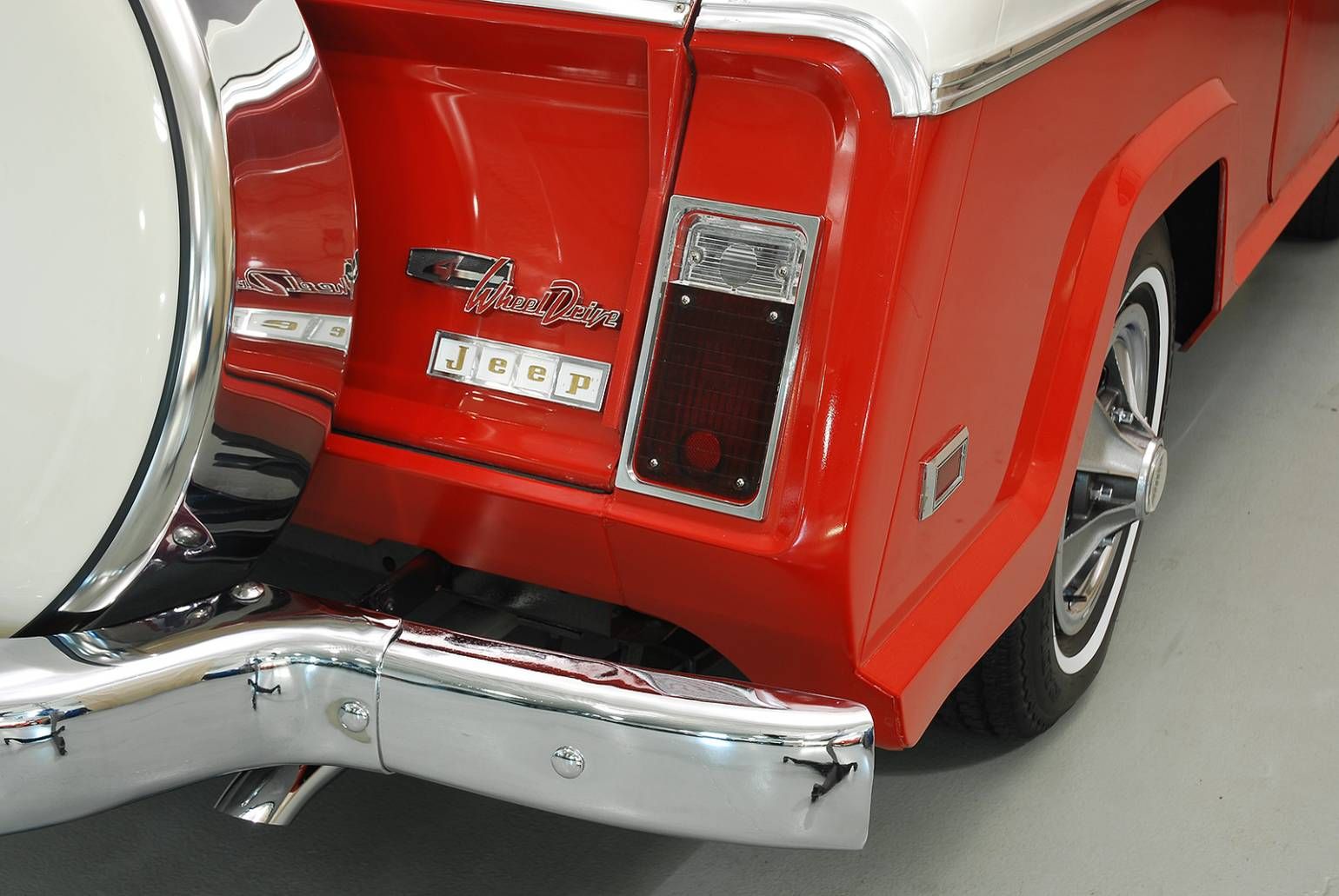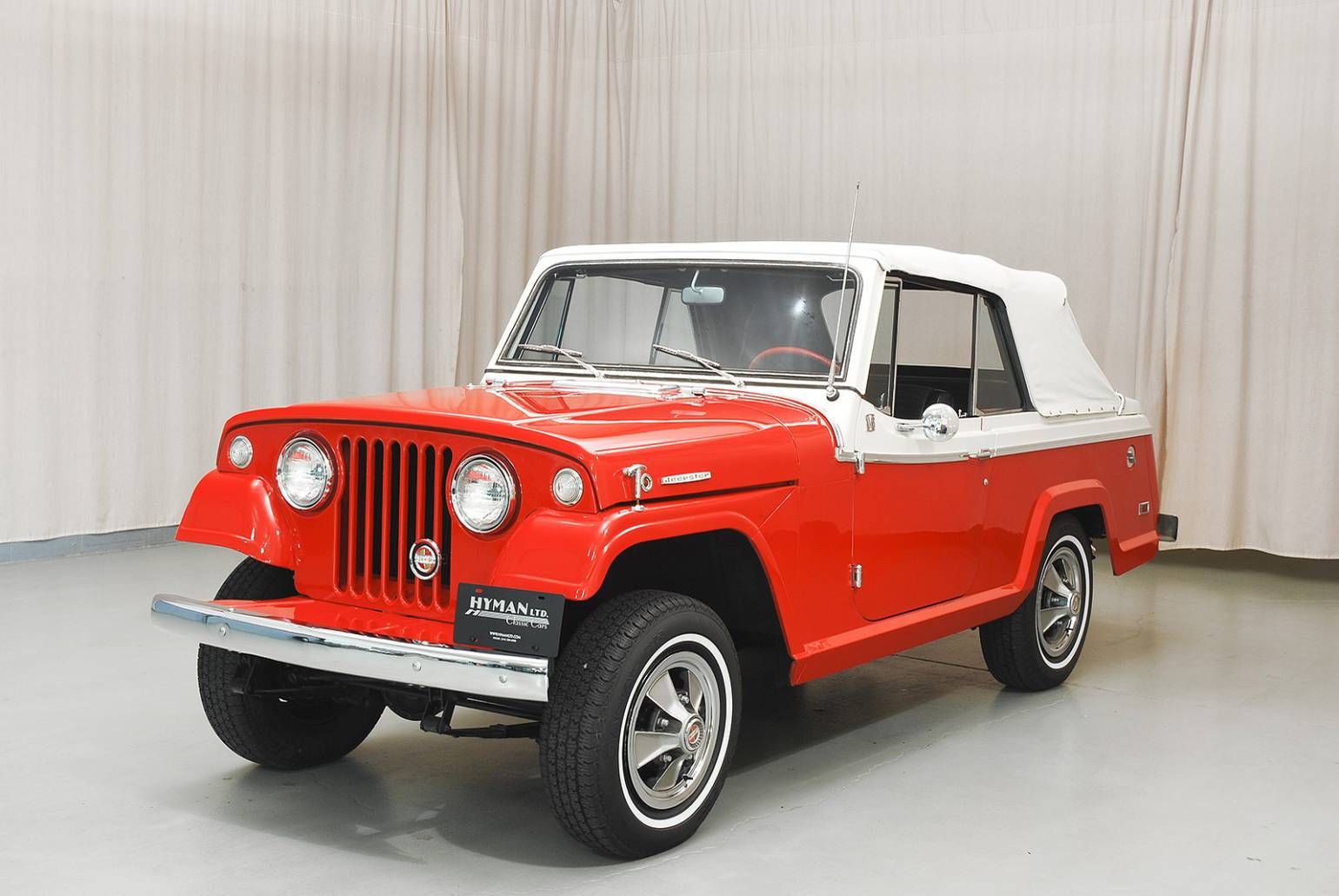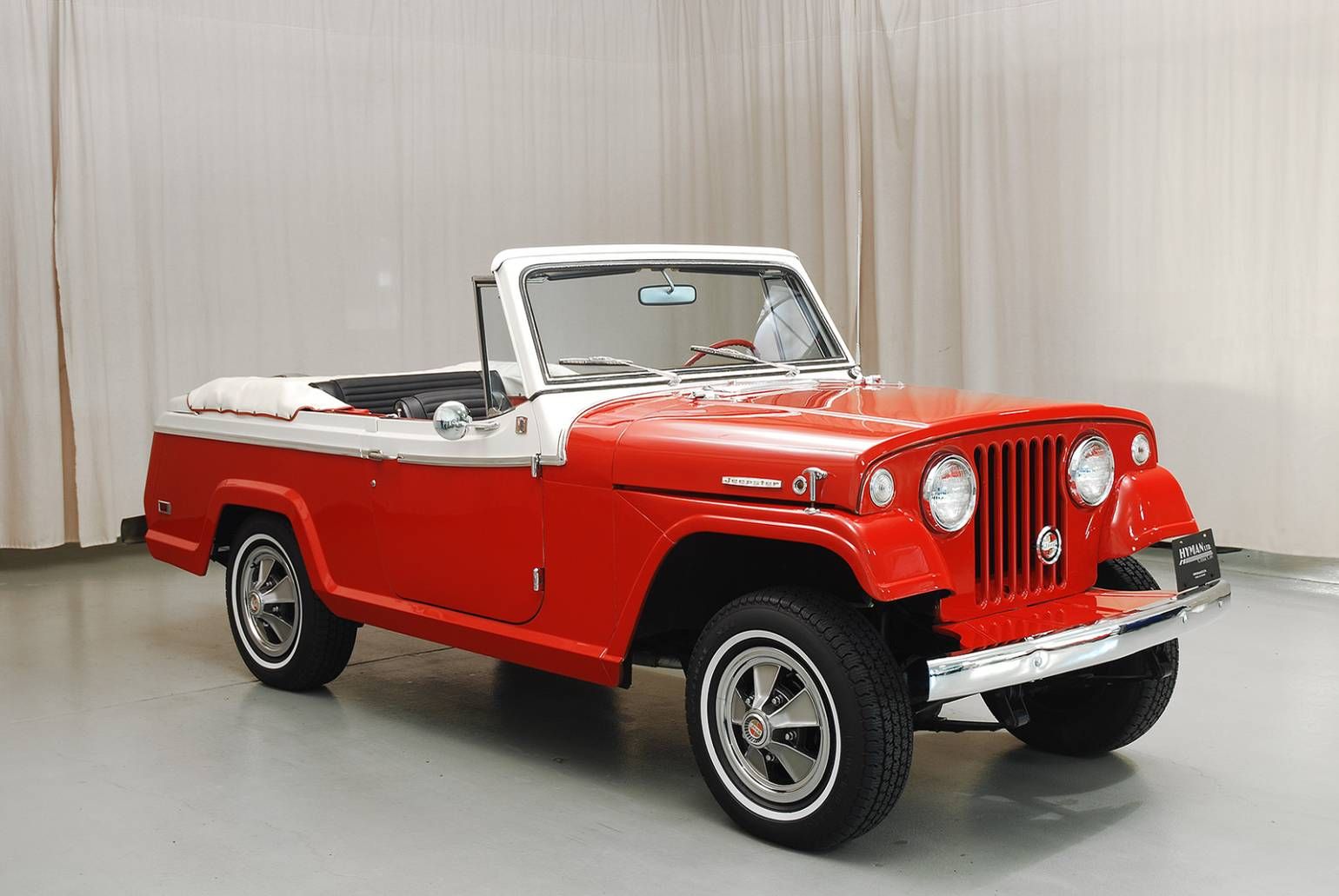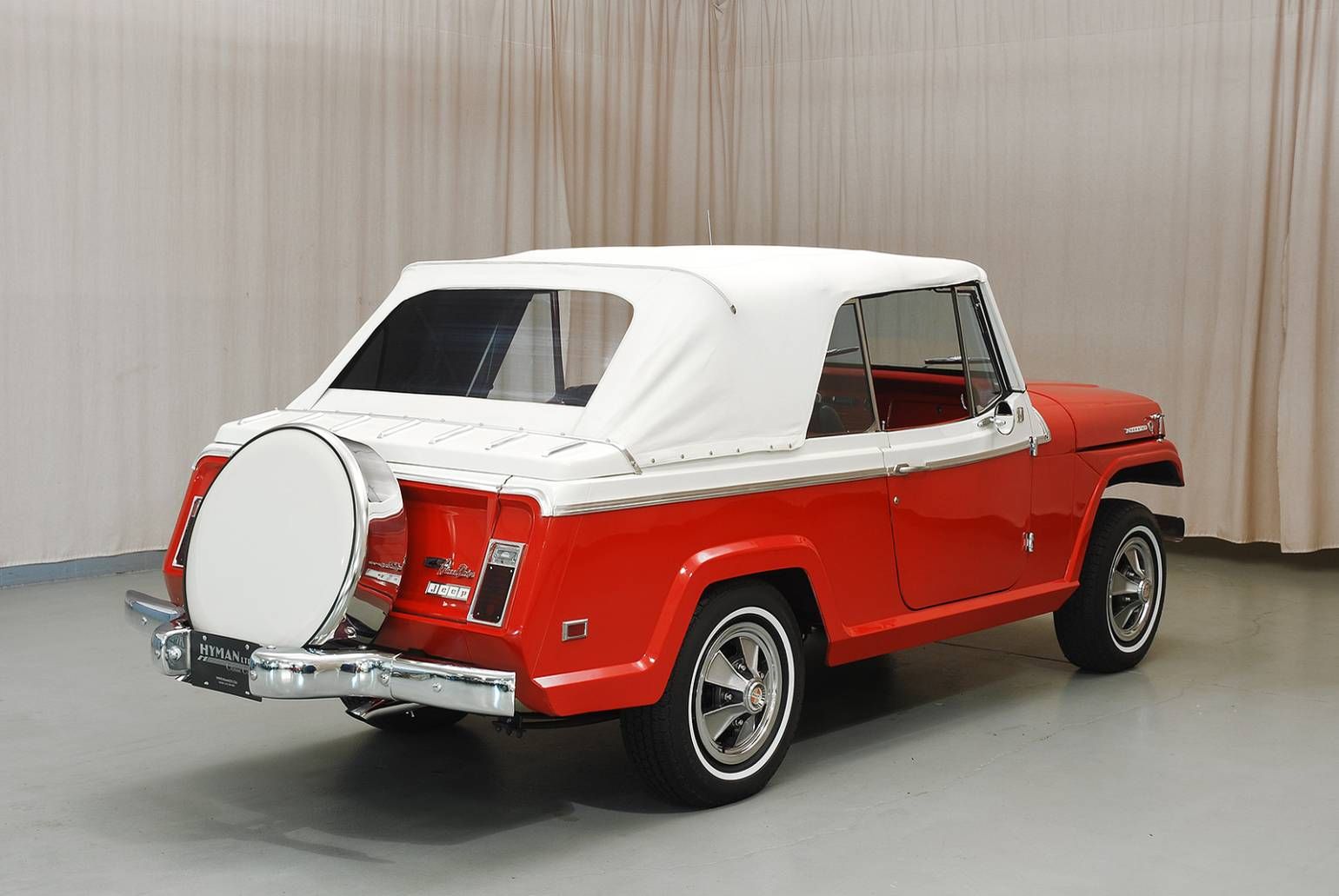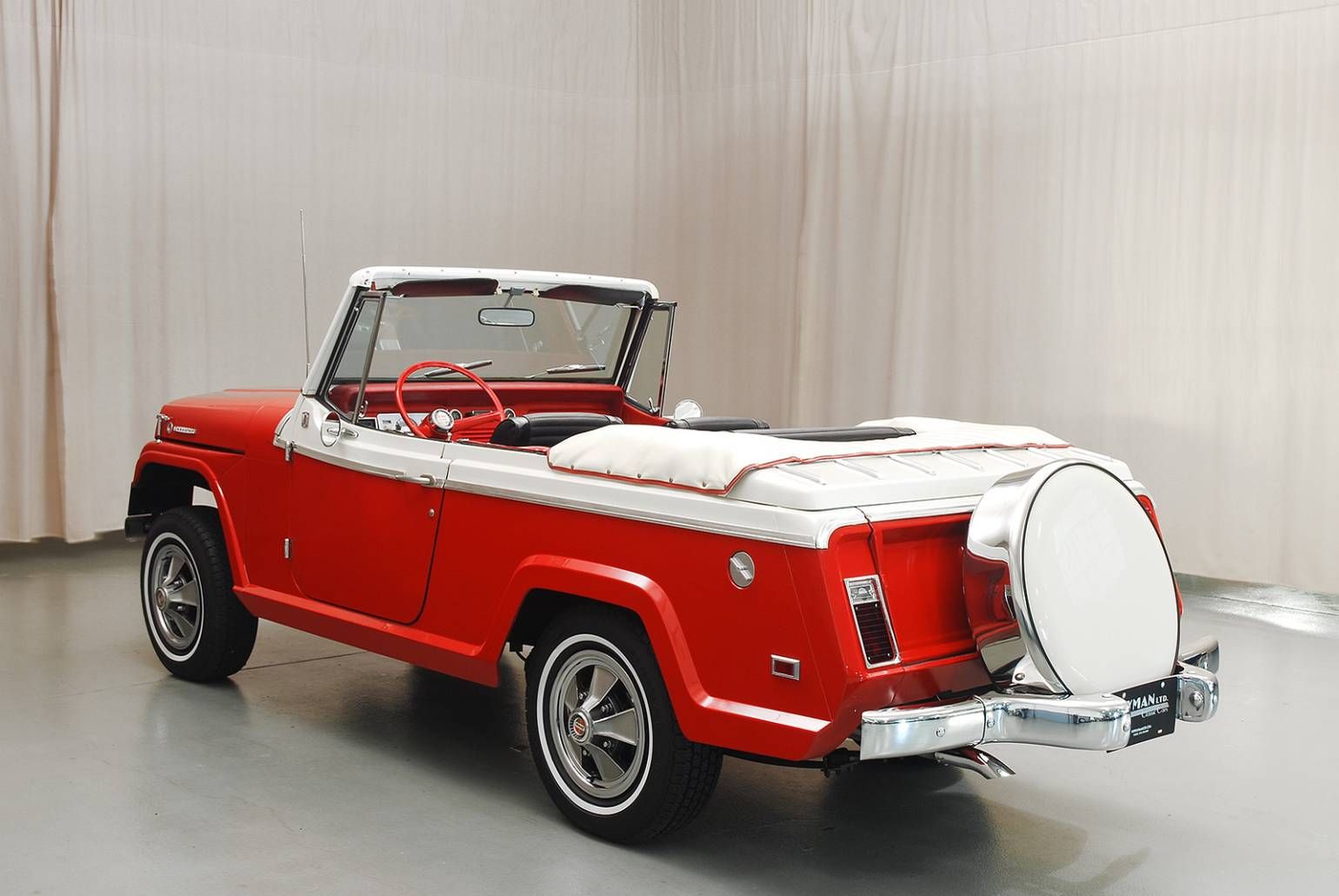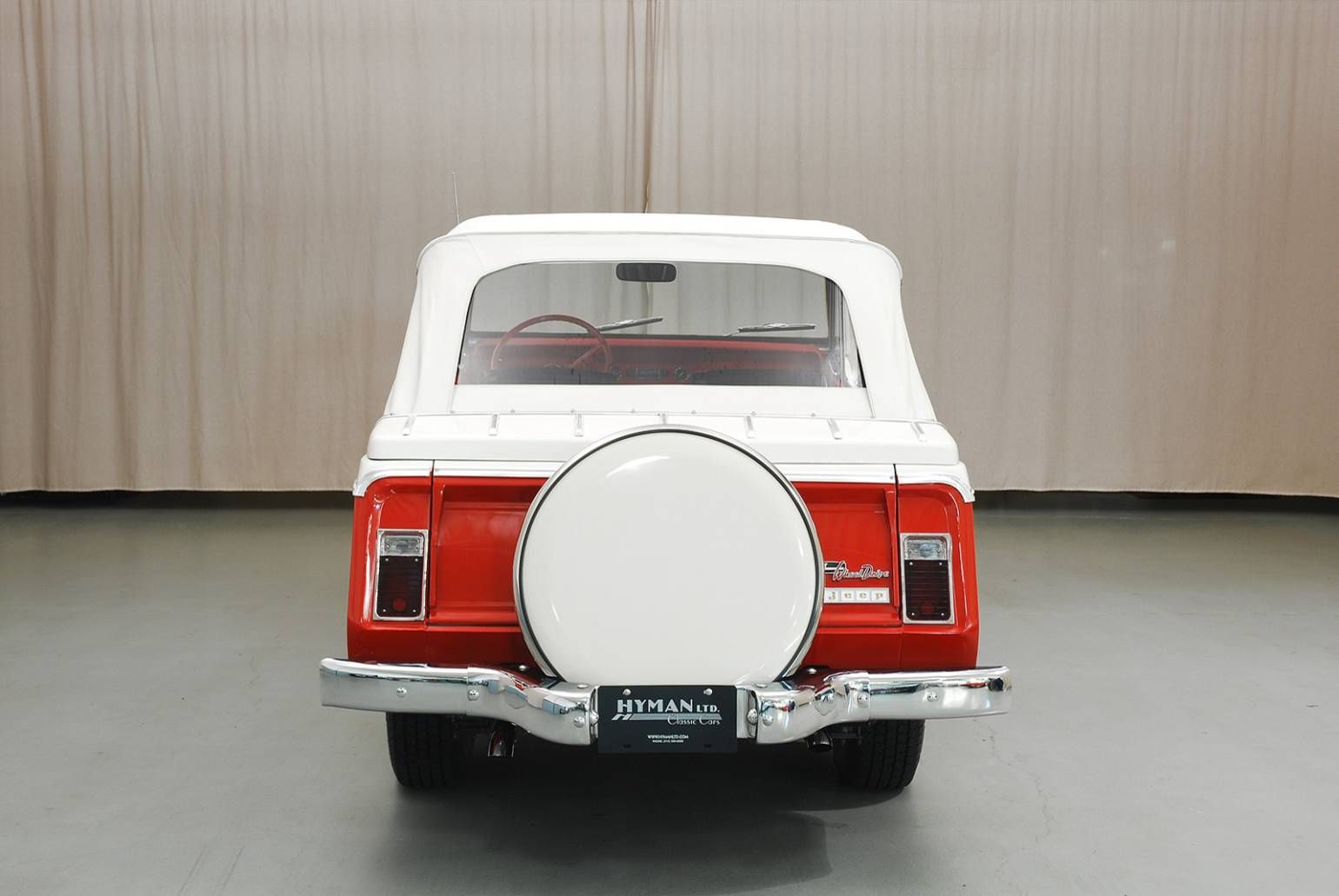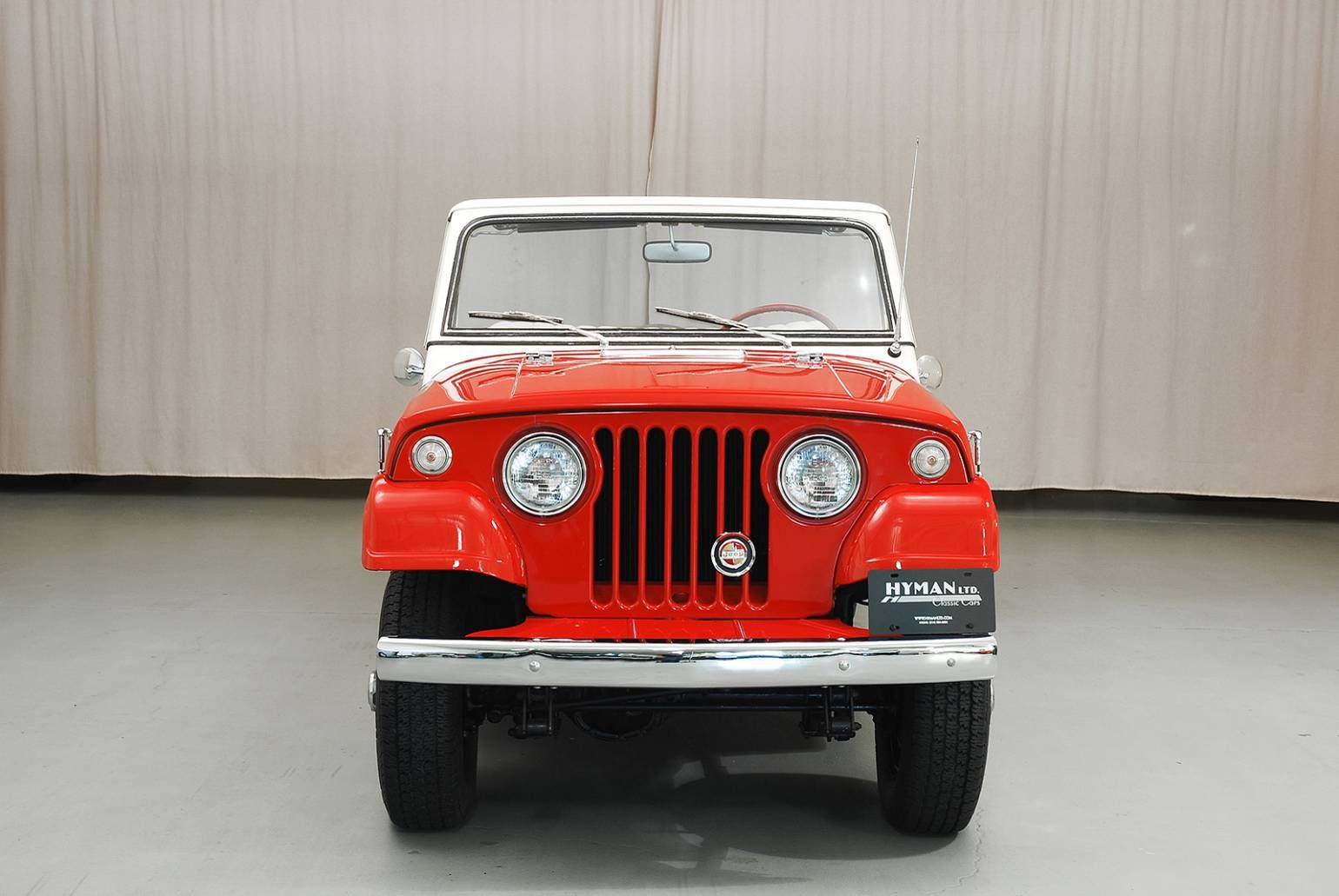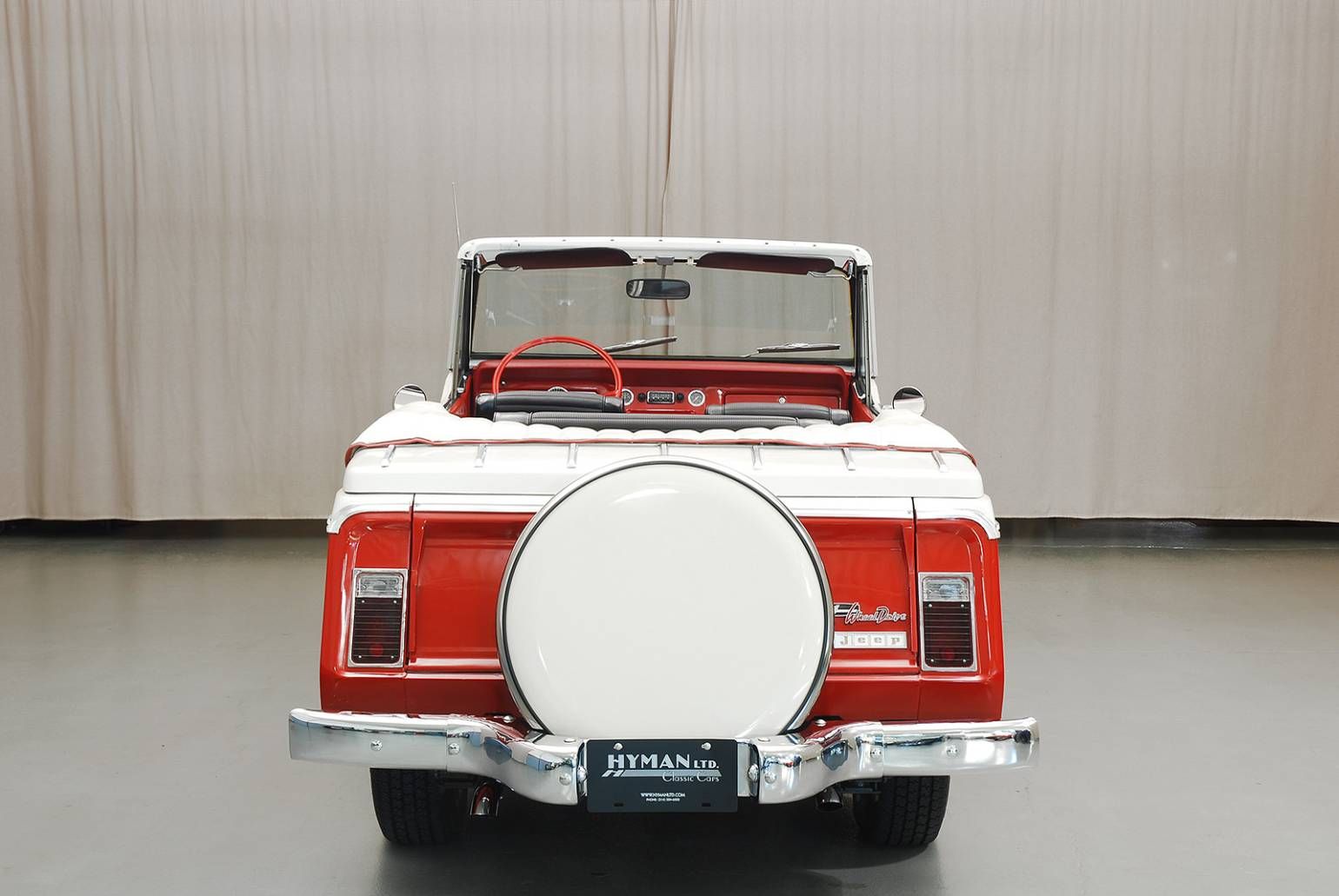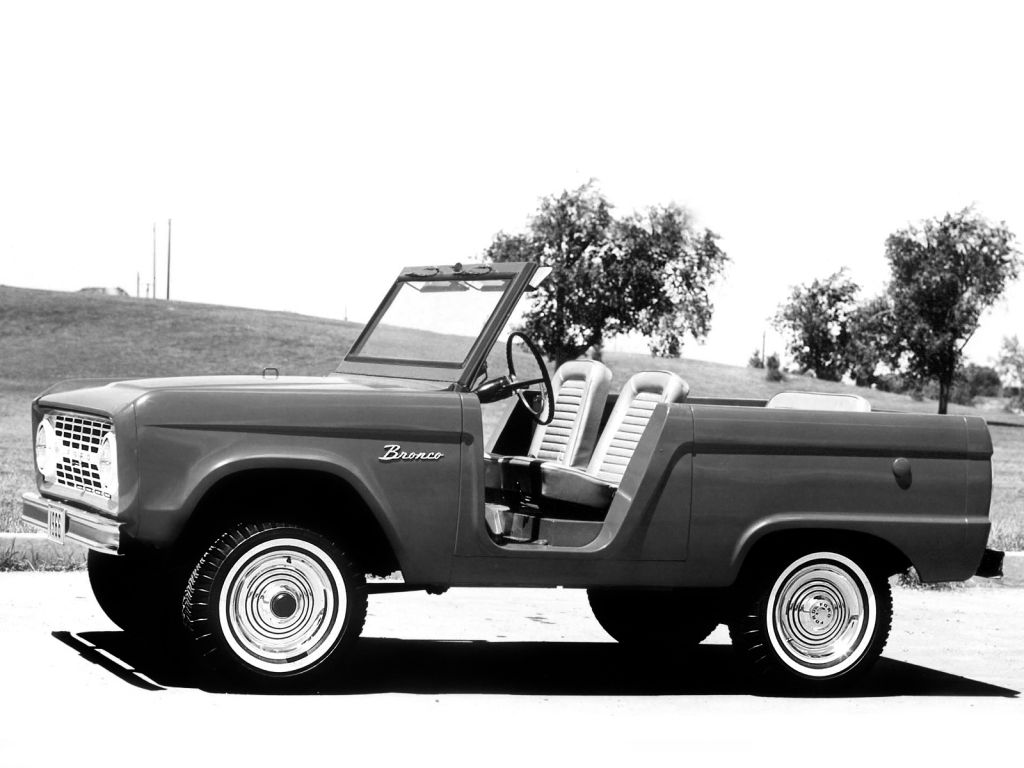Let's just get this out of the way first thing, the vehicle you are looking at is not a Jeepster Commando Convertible. This is a Jeepster Convertible, a similar but still different vehicle which is very frequently mistaken for its Commando cousin. The Jeepster was a more modern take on the SUV,->ke145 but was built long before vehicles like this were the norm in the segment. The name comes from a vehicle built by Willys-Overland just after WWII. The 1948-1950 Jeepster was a way for Willys-Overland to build something more car-like while still using as many components and body panels from the Jeep->ke40 as possible.
Willys-Overland merged with Kaiser in 1953, and eventually the nameplate was reborn for a much more successful line of vehicles that lasted into AMC's ownership of Jeep. The mid-60s was an era when other manufacturers were bringing out off-roaders of their own, and Kaiser needed some fresh thinking in order to hold on to its market segment. The Jeepster was an off-roader with a full interior, air conditioning, carpeting and other refinements that at the time were found in cars, but not off-road vehicles. There was also the Commando line of Jeepsters that were more traditionally utilitarian, but as I mentioned, this isn't one of those.
Continue reading to learn more about the 1968 Jeep Jeepster Convertible.
1968 Jeepster Convertible
- Make: Array
- Model: 1968 Jeepster Convertible
- [do not use] Vehicle Model: Array
Exterior
The Jeep-ness of the vehicle is obvious just from looking at it, and the body forward of the windshield bears an especially strong resemblance. But the windshield itself is a different story, as it is fixed in place like a car's windshield, and doesn't fold down like the Jeep CJ models of the day. The differences become more numerous as you move down the car as well, and an important thing to note is that the convertible top doesn't cover the whole length of the vehicle behind the windshield -- there's a 6-inch panel at the back -- another difference between this and the Commando.
But the best way to tell the difference between this and the Commando is around back, where the Jeepster has a rear-mounted continental spare and a bumper that is formed around it Commandos had spares mounted inside the vehicle, and the bumpers were far more simple. The Jeepster shares its 101-inch wheelbase with the CJ-6, that being the chassis that it was built on.
Interior
While it's true that the Jeepster had a much more complete and car-like interior than that of other Jeep products, there is also far more bare metal than you'd see in a modern SUV. The seats, armrests and door panels are still upholstered though, with the vinyl that was the norm at the time. The windows actually rolled down in this model too, and the unusual glass rear window in the convertible top could zip out for more breeze.
The rear seat is a simple two-person bench, but that isn't at all unusual for any sort of vehicle with two doors, especially a convertible. The full interior is one of the first examples in this sort of vehicle, when manufacturers were just starting to realize that people other than farmers would buy off-road vehicles.
Drivetrain
Base models came with a 75-horsepower four-cylinder engine. This wasn't a lot of power, but neither was it unusually low for this segment, and the Jeepster wasn't especially heavy. For those willing to spend a bit more, there was the 155-horsepower, 225-cubic-inch Dauntless V-6 borrowed from Buick->ke17 available.
This engine allowed the Jeepster to hit 60mph in 12.6 seconds and a top speed of 87 mph. This was pretty respectable for an off-road vehicle at the time, as this segment wasn't yet getting into the giant V-8s that were just becoming popular with muscle cars. This was also an era when automatic transmissions were being sold as luxury items, and since the Jeepster was being sold as a sort of luxury version of a Jeep, it got a three-speed automatic, also sourced from GM.->ke1024
Prices
There were a lot of Jeepsters built, quite a lot. A total of more than 77,000 in just 7 years. But it is important to note that most of these were Commandos, and the more “luxurious” Jeepsters are really quite rare. That said, they aren't Ferrari->ke252 GTOs either, and for all their rarity, they don't offer much exoticism. A fully restored one will run you somewhere in the mid-$30,000 range. That's actually more than you'd usually pay for one of the older original 1948-50 Jeeptsers, of which only a few thousand were ever built, principally because the 1966-73 Jeepsters were just much better vehicles. As always with classics, the condition is important, and prices can vary by tens of thousands of dollars depending on what sort of shape it's in.
Competition
Ford Bronco
This vehicle is essentially the reason why the Kaiser Jeepster existed. Competition from the Bronco->ke4039 is why Kaiser had to rethink the Jeep brand in the first place, and this classic off-roader was some serious competition. It was also massively successful, staying in production for decades and selling in all sort of different configurations. Not being nearly as rare as the Jeepster, or even the Jeepster Commando, there is much more variation in the pricing, and it's much easier to find one. Earlier models aren't quite as luxurious as the Jeepster, but Ford->ke31 didn't take long to catch up.
Land Rover Range Rover
Originally conceived as a “Road Ranger,” the Range Rover->ke469 was another of the big steps toward SUVs with car-like interiors and even handling. This more civilized sort of truck was already in development when Kaiser brought out the Jeepster. It is a more up-market version of the same idea, and it is still going strong today. It cost more when new than a Jeepster, and a classic one will cost you more as well, especially since the Range Rover is better known.
Conclusion
The Jeepster is a genuine part of automotive history. Having beaten the Range Rover to market, it even better represents the turning point in the philosophy of off-road vehicles. It really could work both on and off road, and its owner didn't need to own two vehicles in order to do everything that he wanted. That said, its value is very much tied to its historical significance. It didn't take very long for the market to come up with all sorts of similar vehicles, and an off-roader with seating for four, air conditioning and carpet wouldn't be all that unique for very long. But in the interest of giving credit where credit is due, the Jeepster was a bold vehicle for its time.
Editor's Note: I was lucky enough to own one of these as my first car. My dad bought it new in '68 and sold it to me in '71 when I got my license. It was the most fun car I ever owned -- wish I still had it. I stuck a Lear 8-track in the glove box and a couple of Pioneer home box speakers on the floor in the back. Incredible as it seems now, it was the most badass sound system around in its day. The Jeepster (mine was named Schmedley) was classy as hell then and still is now. I was rollin' in style. Lots of fun dates on the beaches of Florida.
After a few years I swapped the V-6 for a 327 Chevy, and eventually traded it (pretty well thrashed) for a '46 Dodge Power Wagon, but that's another story (or two).

